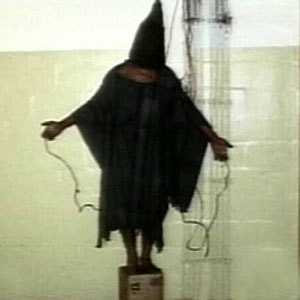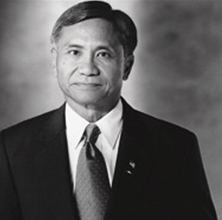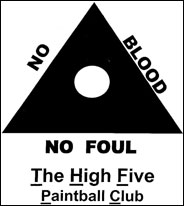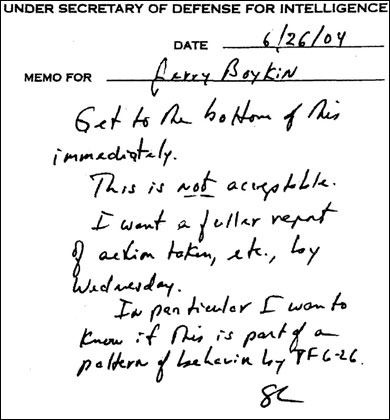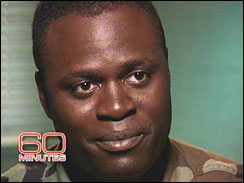| “We don’t do [ Iraqi ] body counts.” |

IRAQ WAR CO$T
(JavaScript Error)
u.s. dead the coffins iraqi casualties |

|
|
guantánamo & abu graib 2 |
|
|
|
"If we believe absurdities, we shall commit atrocities."
"When you fight evil it can embrace you."
"We had the moral right, we had the duty, to destroy the people
who wanted to destroy us. We have fulfilled this most difficult duty
for the love of our people. And our spirit, our soul, our character has not
suffered injury from it."
"It is our duty as Americans to use the military to go into the world and make the
world like us."
"The best political weapon is the weapon of terror. Cruelty commands respect. Men
may hate us. But, we don't ask for their love; only for their fear."
"I do not see why man should not be just as cruel as nature."
"There's no -- no one in this government, here or on the ground, is going to underreport what's happening.
That's just terrible to think that. Even to suggest it is outrageous. Most certainly not!"
"This war has been advanced on lie upon lie. Iraq was not responsible for 9/11. Iraq was not responsible for any
role al-Qaeda may have had in 9/11. Iraq was not responsible for the anthrax attacks on this country. Iraq did not
tried to acquire nuclear weapons technology from Niger. This war is built on falsehood."
|
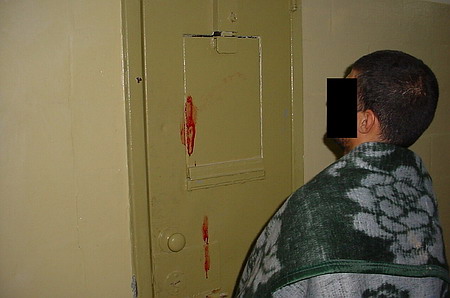 |
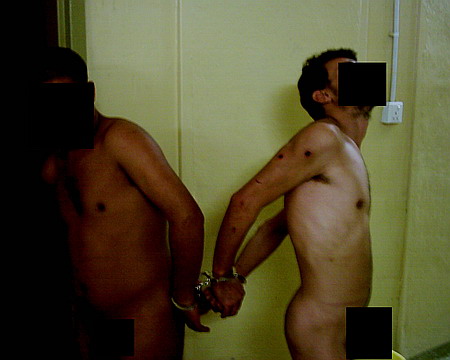 |
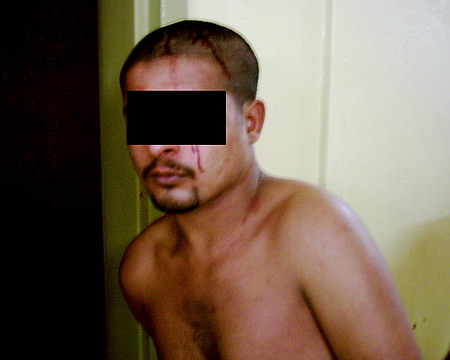 |
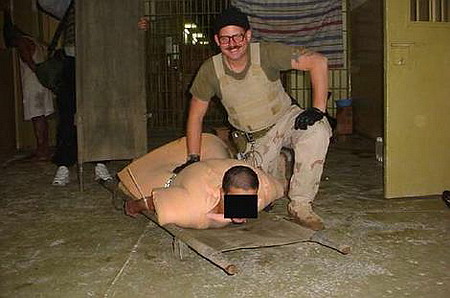 |
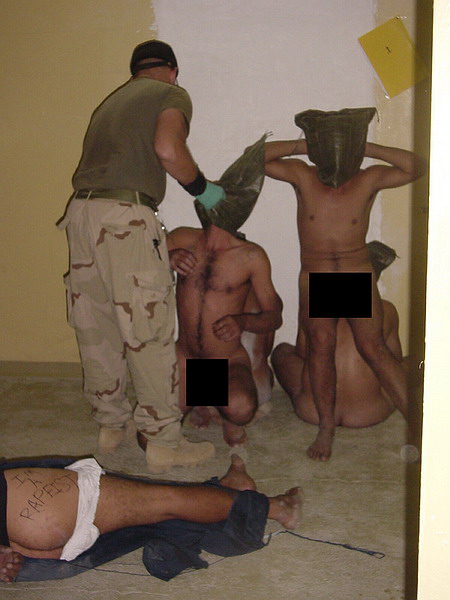 |
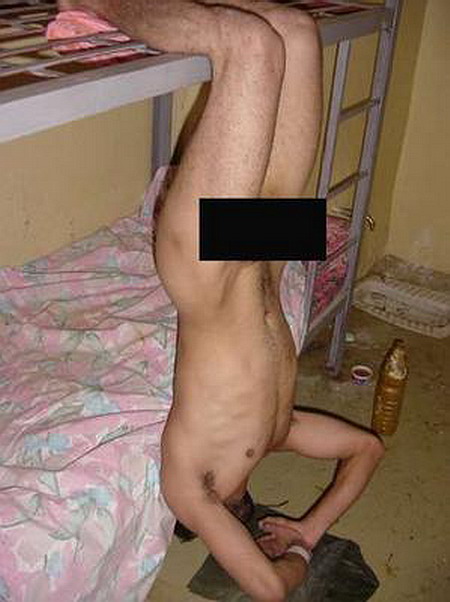 |
 |
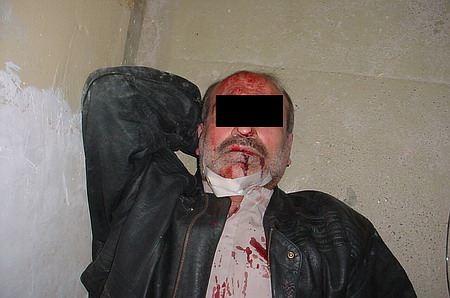 |
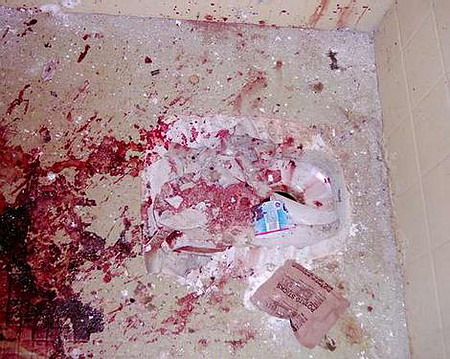 |
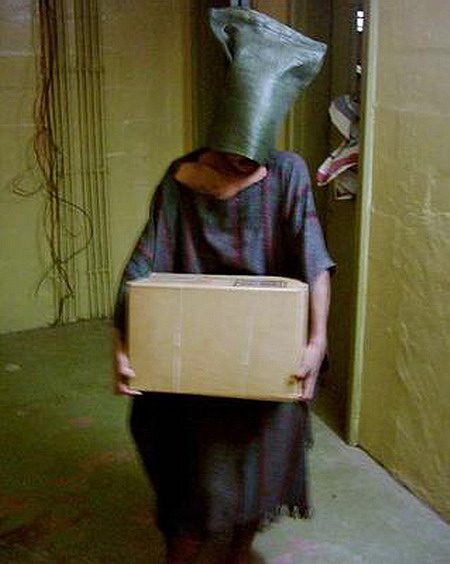 |
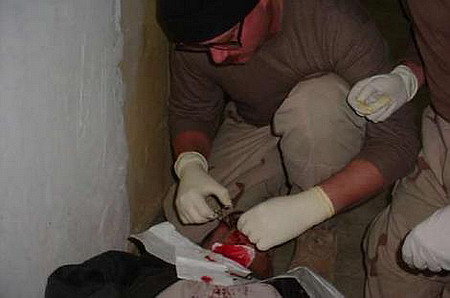 |
 |
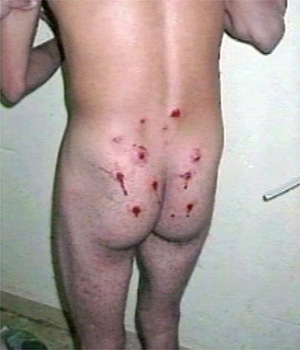 |
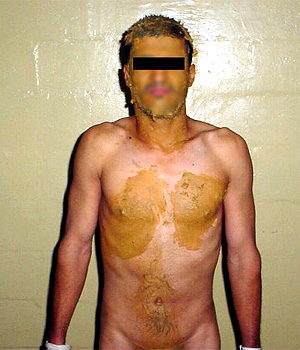 |
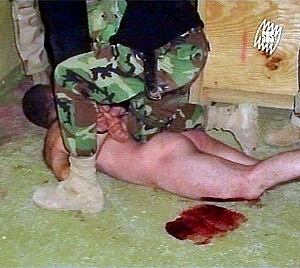 |
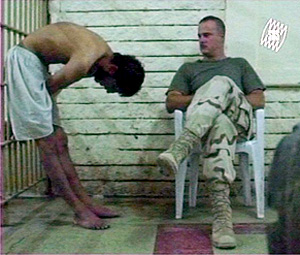 |
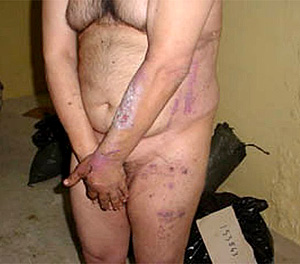 |
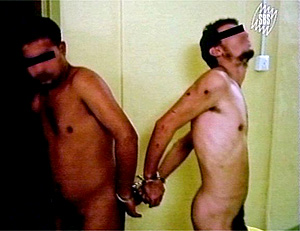 |
 |
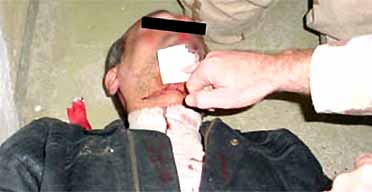 |
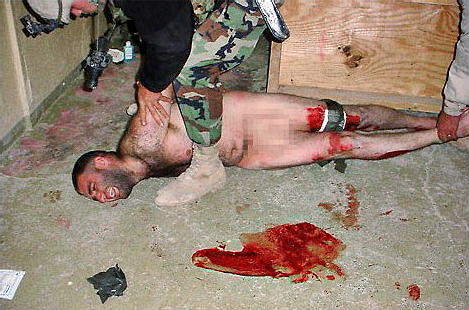 |
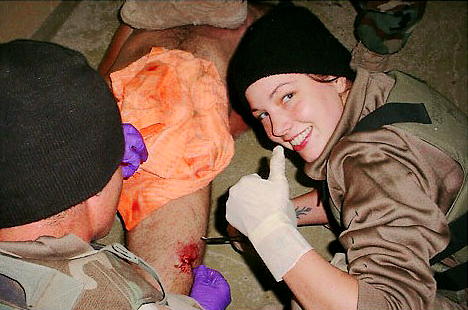 |
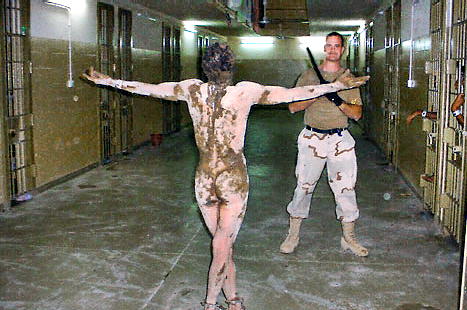 |
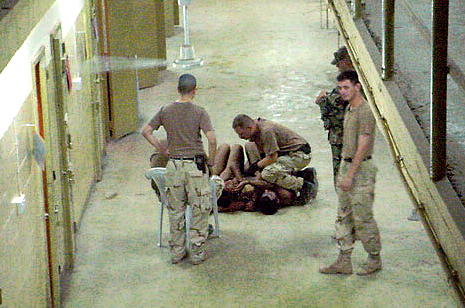 |
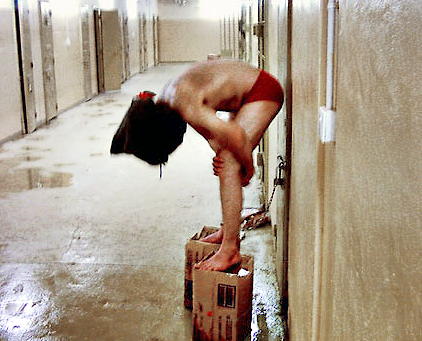 |
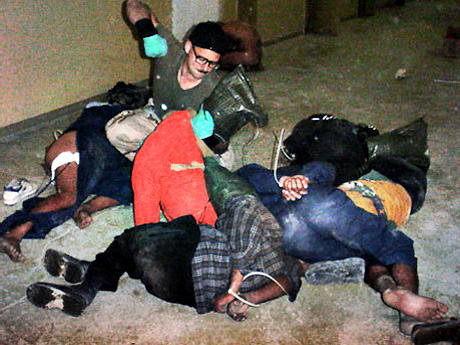 |
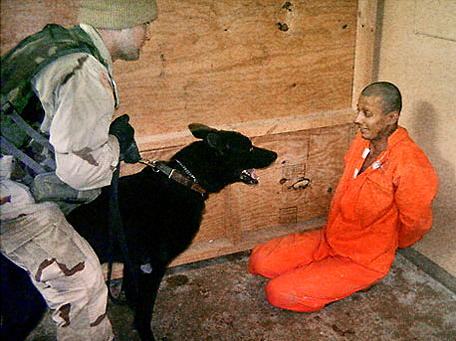 |
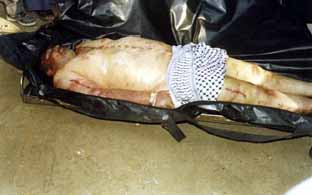 |
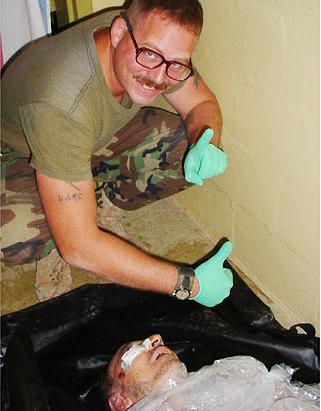 |
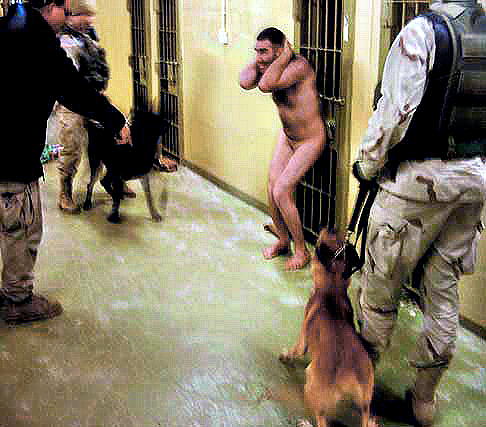 |
 |
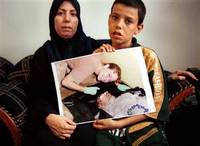 |
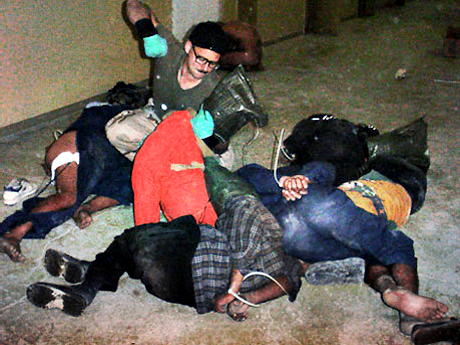 |
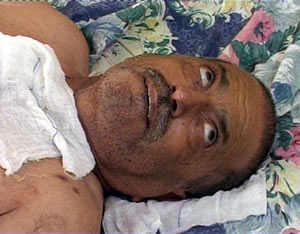 |
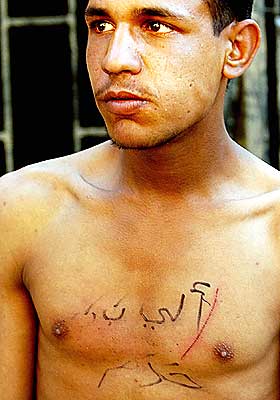 |
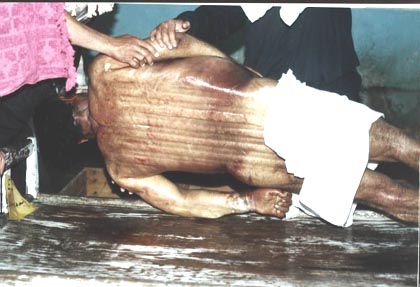 |
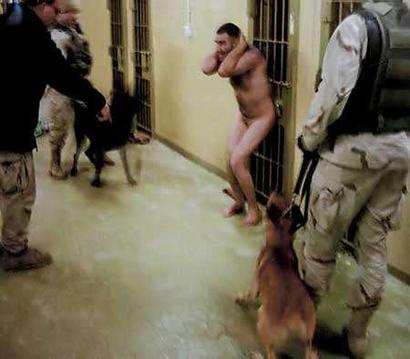 |
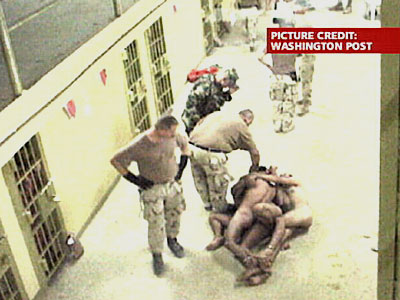 |
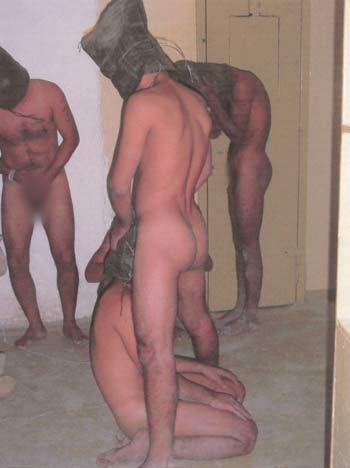 |
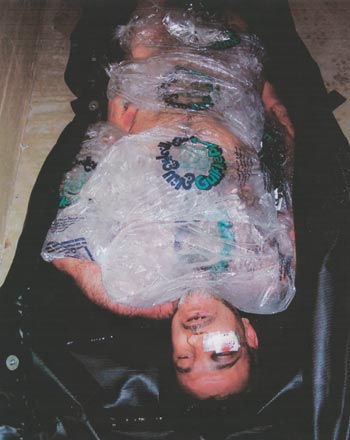 |
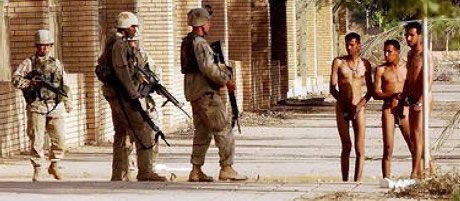 |
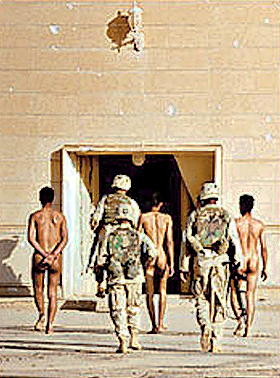 |
 |
 |
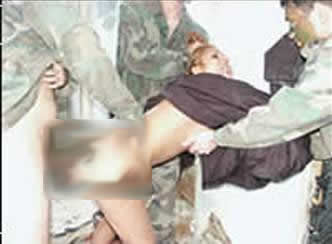 |
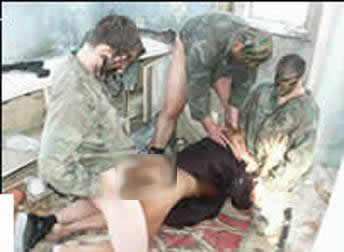 |
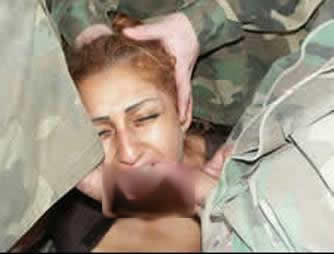 |
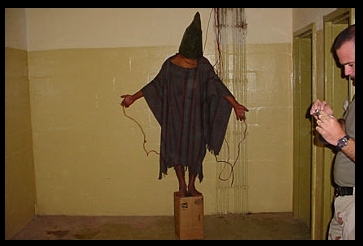 |
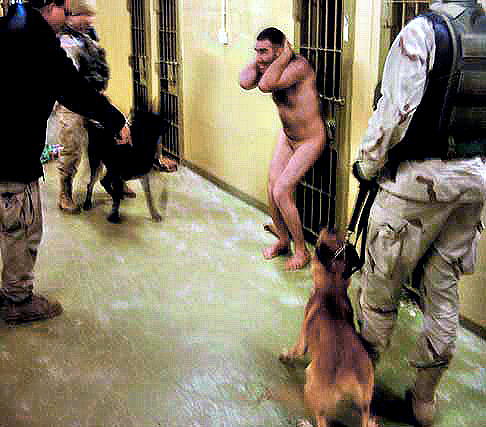 |
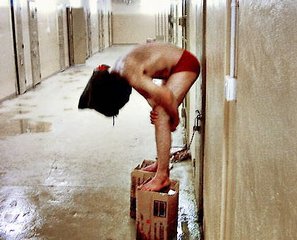 |
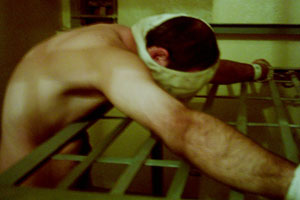 |
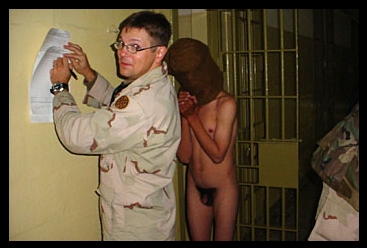 |
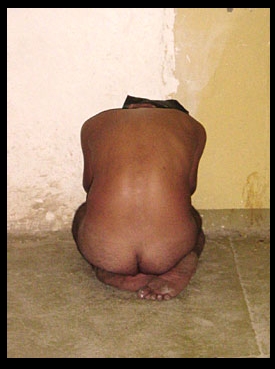 |
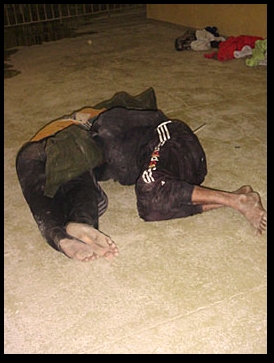 |
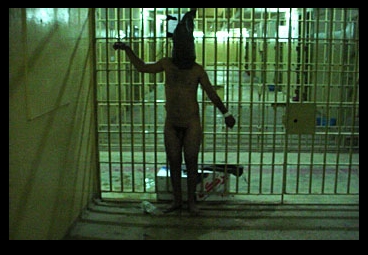 |
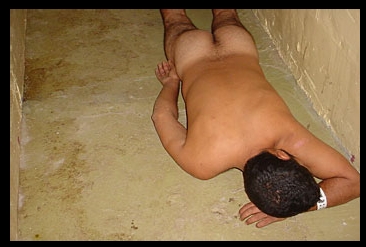 |
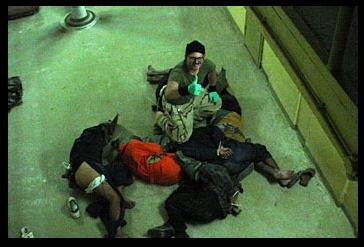 |
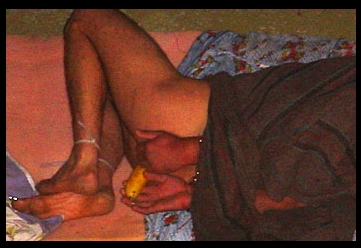 |
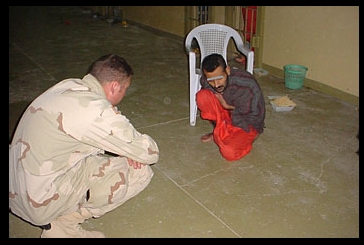 |
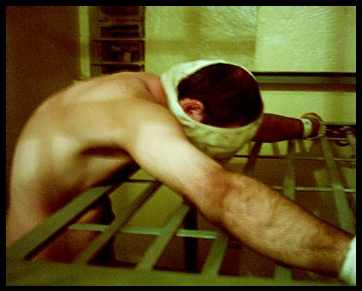 |
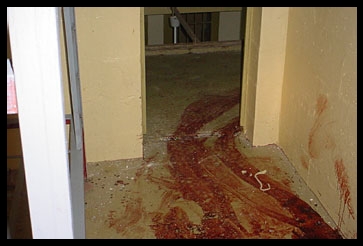 |
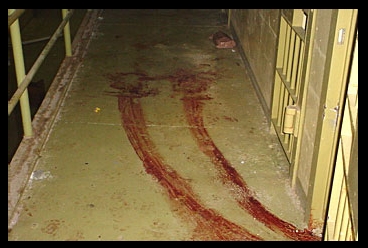 |
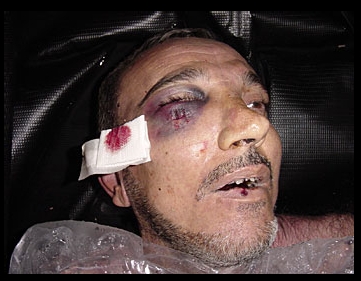 |
 |
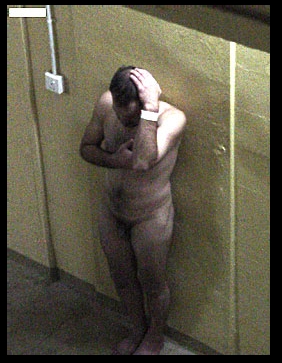 |
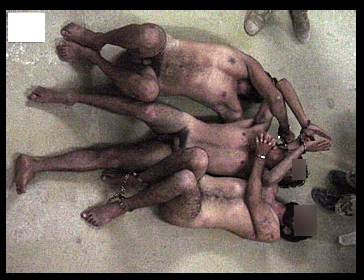 |
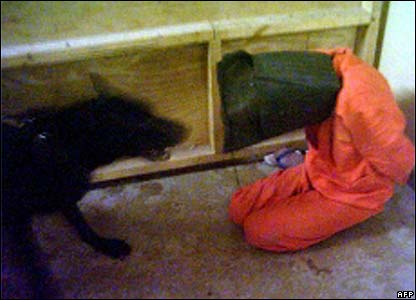 |
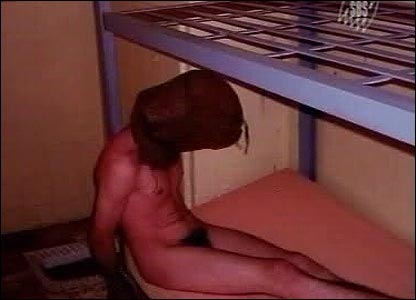 |
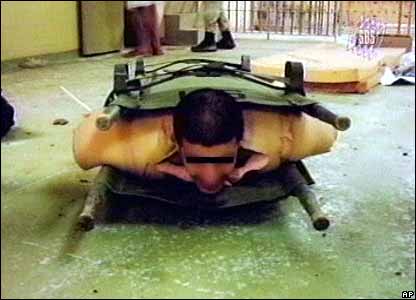 |
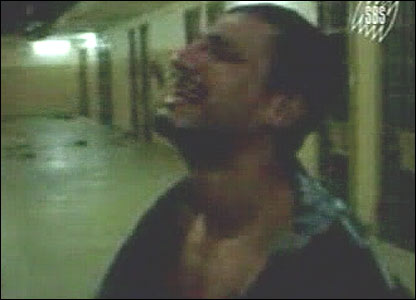 |
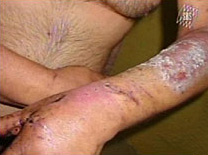 |
|
|
The General's Report
How Antonio Taguba, who investigated the Abu Ghraib scandal, became one of its casualties
If there was a redeeming aspect to the affair, it was in the thoroughness and the passion of the Army's initial investigation. The inquiry had begun in January, and was led by General Taguba, who was stationed in Kuwait at the time. Taguba filed his report in March. In it he found:
Taguba was met at the door of the conference room by an old friend, Lieutenant General Bantz J. Craddock, who was Rumsfeld's senior military assistant. Craddock's daughter had been a babysitter for Taguba's two children when the officers served together years earlier at Fort Stewart, Georgia. But that afternoon, Taguba recalled, "Craddock just said, very coldly, 'Wait here.' " In a series of interviews early this year, the first he has given, Taguba told me that he understood when he began the inquiry that it could damage his career; early on, a senior general in Iraq had pointed out to him that the abused detainees were "only Iraqis." Even so, he was not prepared for the greeting he received when he was finally ushered in.
"Here ... comes ... that famous General Taguba - of the Taguba report!" Rumsfeld declared, in a mocking voice. The meeting was attended by Paul Wolfowitz, Rumsfeld's deputy; Stephen Cambone, the Under-Secretary of Defense for Intelligence; General Richard Myers, chairman of the Joint Chiefs of Staff (J.C.S.); and General Peter Schoomaker, the Army chief of staff, along with Craddock and other officials. Taguba, describing the moment nearly three years later, said, sadly, "I thought they wanted to know. I assumed they wanted to know. I was ignorant of the setting."
In the meeting, the officials professed ignorance about Abu Ghraib. "Could you tell us what happened?" Wolfowitz asked. Someone else asked, "Is it abuse or torture?" At that point, Taguba recalled, "I described a naked detainee lying on the wet floor, handcuffed, with an interrogator shoving things up his rectum, and said, 'That's not abuse. That's torture.' There was quiet."
Rumsfeld was particularly concerned about how the classified report had become public. "General," he asked, "who do you think leaked the report?" Taguba responded that perhaps a senior military leader who knew about the investigation had done so. "It was just my speculation," he recalled. "Rumsfeld didn't say anything." (I did not meet Taguba until mid-2006 and obtained his report elsewhere.) Rumsfeld also complained about not being given the information he needed. "Here I am," Taguba recalled Rumsfeld saying, "just a Secretary of Defense, and we have not seen a copy of your report. I have not seen the photographs, and I have to testify to Congress tomorrow and talk about this." As Rumsfeld spoke, Taguba said, "He's looking at me. It was a statement."
At best, Taguba said, "Rumsfeld was in denial." Taguba had submitted more than a dozen copies of his report through several channels at the Pentagon and to the Central Command headquarters, in Tampa, Florida, which ran the war in Iraq. By the time he walked into Rumsfeld's conference room, he had spent weeks briefing senior military leaders on the report, but he received no indication that any of them, with the exception of General Schoomaker, had actually read it. (Schoomaker later sent Taguba a note praising his honesty and leadership.) When Taguba urged one lieutenant general to look at the photographs, he rebuffed him, saying, "I don't want to get involved by looking, because what do you do with that information, once you know what they show?"
Taguba also knew that senior officials in Rumsfeld's office and elsewhere in the Pentagon had been given a graphic account of the pictures from Abu Ghraib, and told of their potential strategic significance, within days of the first complaint. On January 13, 2004, a military policeman named Joseph Darby gave the Army's Criminal Investigation Division (C.I.D.) a CD full of images of abuse. Two days later, General Craddock and Vice-Admiral Timothy Keating, the director of the Joint Staff of the J.C.S., were e-mailed a summary of the abuses depicted on the CD. It said that approximately ten soldiers were shown, involved in acts that included:
Taguba said, "You didn't need to 'see' anything - just take the secure e-mail traffic at face value."
I learned from Taguba that the first wave of materials included descriptions of the sexual humiliation of a father with his son, who were both detainees. Several of these images, including one of an Iraqi woman detainee baring her breasts, have since surfaced; others have not. (Taguba's report noted that photographs and videos were being held by the C.I.D. because of ongoing criminal investigations and their "extremely sensitive nature.") Taguba said that he saw "a video of a male American soldier in uniform sodomizing a female detainee." The video was not made public in any of the subsequent court proceedings, nor has there been any public government mention of it. Such images would have added an even more inflammatory element to the outcry over Abu Ghraib. "It's bad enough that there were photographs of Arab men wearing women's panties," Taguba said.
On January 20th, the chief of staff at Central Command sent another e-mail to Admiral Keating, copied to General Craddock and Lieutenant General Ricardo Sanchez, the Army commander in Iraq. The chief of staff wrote, "Sir: update on alleged detainee abuse per our discussion. DID IT REALLY HAPPEN? Yes, currently have 4 confessions implicating perhaps 10 soldiers. DO PHOTOS EXIST? Yes. A CD with approx 100 photos and a video - CID has these in their possession."
In subsequent testimony, General Myers, the J.C.S. chairman, acknowledged, without mentioning the e-mails, that in January information about the photographs had been given "to me and the Secretary up through the chain of command... . And the general nature of the photos, about nudity, some mock sexual acts and other abuse, was described."
Nevertheless, Rumsfeld, in his appearances before the Senate and the House Armed Services Committees on May 7th, claimed to have had no idea of the extensive abuse. "It breaks our hearts that in fact someone didn't say, 'Wait, look, this is terrible. We need to do something,' " Rumsfeld told the congressmen. "I wish we had known more, sooner, and been able to tell you more sooner, but we didn't."
Rumsfeld told the legislators that, when stories about the Taguba report appeared, "it was not yet in the Pentagon, to my knowledge." As for the photographs, Rumsfeld told the senators, "I say no one in the Pentagon had seen them"; at the House hearing, he said, "I didn't see them until last night at 7:30." Asked specifically when he had been made aware of the photographs, Rumsfeld said:
"And, as a result, somebody just sent a secret report to the press, and there they are," Rumsfeld said.
Taguba, watching the hearings, was appalled. He believed that Rumsfeld's testimony was simply not true. "The photographs were available to him - if he wanted to see them," Taguba said. Rumsfeld's lack of knowledge was hard to credit. Taguba later wondered if perhaps Cambone had the photographs and kept them from Rumsfeld because he was reluctant to give his notoriously difficult boss bad news. But Taguba also recalled thinking, "Rumsfeld is very perceptive and has a mind like a steel trap. There's no way he's suffering from C.R.S. - Can't Remember Shit. He's trying to acquit himself, and a lot of people are lying to protect themselves." It distressed Taguba that Rumsfeld was accompanied in his Senate and House appearances by senior military officers who concurred with his denials.
"The whole idea that Rumsfeld projects - 'We're here to protect the nation from terrorism' - is an oxymoron," Taguba said. "He and his aides have abused their offices and have no idea of the values and high standards that are expected of them. And they've dragged a lot of officers with them."
In response to detailed queries about this article, Colonel Gary Keck, a Pentagon spokesman, said in an e-mail, "The department did not promulgate interrogation policies or guidelines that directed, sanctioned, or encouraged abuse." He added, "When there have been abuses, those violations are taken seriously, acted upon promptly, investigated thoroughly, and the wrongdoers are held accountable." Regarding early warnings about Abu Ghraib, Colonel Keck said, "Former Secretary of Defense Rumsfeld has stated publicly under oath that he and other senior leaders were not provided pictures from Abu Ghraib until shortly before their release." (Rumsfeld, through an aide, declined to answer questions, as did General Craddock. Other senior commanders did not respond to requests for comment.)
During the next two years, Taguba assiduously avoided the press, telling his relatives not to talk about his work. Friends and family had been inundated with telephone calls and visitors, and, Taguba said, "I didn't want them to be involved." Taguba retired in January, 2007, after thirty-four years of active service, and finally agreed to talk to me about his investigation of Abu Ghraib and what he believed were the serious misrepresentations by officials that followed. "From what I knew, troops just don't take it upon themselves to initiate what they did without any form of knowledge of the higher-ups," Taguba told me. His orders were clear, however: he was to investigate only the military police at Abu Ghraib, and not those above them in the chain of command. "These M.P. troops were not that creative," he said. "Somebody was giving them guidance, but I was legally prevented from further investigation into higher authority. I was limited to a box."
General Taguba is a slight man with a friendly demeanor and an unfailingly polite correctness. "I came from a poor family and had to work hard," he said. "It was always shine the shoes on Saturday morning for church, and wash the car on Saturday for church. And Saturday also for mowing the lawn and doing yard jobs for church."
His father, Tomas, was born in the Philippines and was drafted into the Philippine Scouts in early 1942, at the height of the Japanese attack on the joint American-Filipino force led by General Douglas MacArthur. Tomas was captured by the Japanese on the Bataan peninsula in April, 1942, and endured the Bataan Death March, which took thousands of American and Filipino lives. Tomas escaped and joined the underground resistance to the Japanese before returning to the American Army, in July, 1945.
Taguba's mother, Maria, spent much of the Second World War living across the street from a Japanese-run prisoner-of-war camp in Manila. Taguba remembers her vivid accounts of prisoners who were bayonetted arbitrarily or whose fingernails were pulled out. Antonio, the eldest son (he has six siblings), was born in Manila in 1950. Maria and Tomas were devout Catholics, and their children were taught respect and, Taguba recalls, "above all, integrity in how you lived your life and practiced your religion."
In 1961, the family moved to Hawaii, where Tomas retired from the military and took a civilian job in logistics, preparing units for deployment to Vietnam. A year after they arrived, Antonio became a U.S. citizen. By then, as a sixth grader, he was delivering newspapers, serving as an altar boy, and doing well in school. He went to Idaho State University, in Pocatello, with help from the Army R.O.T.C., and graduated in 1972. As a newly commissioned second lieutenant, he was five feet six inches tall and weighed a hundred and twenty pounds. His Army service began immediately: he led troops at the platoon, company, battalion, and brigade levels at bases in South Korea, Germany, and across America. (He married in 1981, and has two grown children.) In 1986, Taguba, then a major, was selected to attend the College of Naval Command and Staff at the Naval War College, in Newport, Rhode Island. While there, he wrote an analysis of Soviet ground-attack planning that became required reading at the school. He was promoted, ahead of his peers, to become a colonel and then a general. On the way, Taguba earned three master's degrees - in public administration, international relations, and national-security studies.
"I'll talk to you about discrimination," he said one morning, while discussing, without bitterness, his early years as an Army officer. "Let's talk about being refused to be served at a restaurant in public. Let's talk about having to do things two times, and being accused of not speaking English well, and having to pay myself for my three master's degrees because the Army didn't think I was smart enough. So what? Just work your ass off. So what? The hard work paid off."
Taguba had joined the Army knowing little about his father's military experience. "He saw the ravages and brutality of war, but he wasn't about to brag about his exploits," Taguba said. "He didn't say anything until 1997, and it took me two years to rebuild his records and show that he was authorized for an award." On Tomas's eightieth birthday, he was awarded the Bronze Star and a prisoner-of-war medal in a ceremony at Schofield Barracks, in Hawaii. "My father never laughed," Taguba said. But the day he got his medal "he smiled - he had a big-ass smile on his face. I'd never seen him look so proud. He was a bent man with carpal-tunnel syndrome, but at the end of the medal ceremony he stood himself up and saluted. I cried, and everyone in my family burst into tears."
Richard Armitage, a former Navy counter-insurgency officer who served as Deputy Secretary of State in the first Bush term, recalled meeting Taguba, then a lieutenant colonel, in South Korea in the early nineteen-nineties. "I was told to keep an eye on this young guy - 'He's going to be a general,' " Armitage said. "Taguba was discreet and low key - not a sprinter but a marathoner."
At the time, Taguba was working for Major General Mike Myatt, a marine who was the officer in charge of strategic talks with the South Koreans, on behalf of the American military. "I needed an executive assistant with brains and integrity," Myatt, who is now retired and living in San Francisco, told me. After interviewing a number of young officers, he chose Taguba. "He was ethical and he knew his stuff," Myatt said. "We really became close, and I'd trust him with my life. We talked about military strategy and policy, and the moral aspect of war - the importance of not losing the moral high ground." Myatt followed Taguba's involvement in the Abu Ghraib inquiry, and said, "I was so proud of him. I told him, 'Tony, you've maintained yourself, and your integrity.' "
Taguba got a different message, however, from other officers, among them General John Abizaid, then the head of Central Command. A few weeks after his report became public, Taguba, who was still in Kuwait, was in the back seat of a Mercedes sedan with Abizaid. Abizaid's driver and his interpreter, who also served as a bodyguard, were in front. Abizaid turned to Taguba and issued a quiet warning: "You and your report will be investigated."
"I wasn't angry about what he said but disappointed that he would say that to me," Taguba said. "I'd been in the Army thirty-two years by then, and it was the first time that I thought I was in the Mafia."
The Investigation
Taguba was given the job of investigating Abu Ghraib because of circumstance: the senior officer of the 800th Military Police Brigade, to which the soldiers in the photographs belonged, was a one-star general; Army regulations required that the head of the inquiry be senior to the commander of the unit being investigated, and Taguba, a two-star general, was available. "It was as simple as that," he said. He vividly remembers his first thought upon seeing the photographs in late January of 2004: "Unbelievable! What were these people doing?" There was an immediate second thought: "This is big."
Taguba decided to keep the photographs from most of the interrogators and researchers on his staff of twenty-three officers. "I didn't want them to prejudge the soldiers they were investigating, so I put the photos in a safe," he told me. "Anyone who wanted to see them had to have a need-to-know and go through me." His decision to keep the staff in the background was also intended to insure that none of them suffered damage to his or her career because of involvement in the inquiry. "I knew it was going to be very sensitive because of the gravity of what was in front of us," he said.
The team spent much of February, 2004, in Iraq. Taguba was overwhelmed by the scale of the wrongdoing. "These were people who were taken off the streets and put in jail - teen-agers and old men and women," he said. "I kept on asking these questions of the officers I interviewed: 'You knew what was going on. Why didn't you do something to stop it?' "
Taguba's assignment was limited to investigating the 800th M.P.s, but he quickly found signs of the involvement of military intelligence - both the 205th Military Intelligence Brigade, commanded by Colonel Thomas Pappas, which worked closely with the M.P.s, and what were called "other government agencies," or O.G.A.s, a euphemism for the C.I.A. and special-operations units operating undercover in Iraq. Some of the earliest evidence involved Lieutenant Colonel Steven L. Jordan, whose name was mentioned in interviews with several M.P.s. For the first three weeks of the investigation, Jordan was nowhere to be found, despite repeated requests. When the investigators finally located him, he asked whether he needed to shave his beard before being interviewed - Taguba suspected that he had been dressing as a civilian. "When I asked him about his assignment, he says, 'I'm a liaison officer for intelligence from Army headquarters in Iraq.' " But in the course of three or four interviews with Jordan, Taguba said, he began to suspect that the lieutenant colonel had been more intimately involved in the interrogation process - some of it brutal - for "high value" detainees.
"Jordan denied everything, and yet he had the authority to enter the prison's 'hard site' " - where the most important detainees were held - "carrying a carbine and an M9 pistol, which is against regulations," Taguba said. Jordan had also led a squad of military policemen in a shoot-out inside the hard site with a detainee from Syria who had managed to obtain a gun. (A lawyer for Jordan disputed these allegations; in the shoot-out, he said, Jordan was "just another gun on the extraction team" and not the leader. He noted that Jordan was not a trained interrogator.)
Taguba said that Jordan's "record reflected an extensive intelligence background." He also had reason to believe that Jordan was not reporting through the chain of command. But Taguba's narrowly focussed mission constrained the questions he could ask. "I suspected that somebody was giving them guidance, but I could not print that," Taguba said.
"After all Jordan's evasiveness and misleading responses, his rights were read to him," Taguba went on. Jordan subsequently became the only officer facing trial on criminal charges in connection with Abu Ghraib and is scheduled to be court-martialled in late August. (Seven M.P.s were convicted of charges that included dereliction of duty, maltreatment, and assault; one defendant, Specialist Charles Graner, was sentenced to ten years in prison.) Last month, a military judge ruled that Jordan, who is still assigned to the Army's Intelligence and Security Command, had not been appropriately advised of his rights during his interviews with Taguba, undermining the Army's allegation that he lied during the Taguba inquiry. Six other charges remain, including failure to obey an order or regulation; cruelty and maltreatment; and false swearing and obstruction of justice. (His lawyer said, "The evidence clearly shows that he is innocent.")
Taguba came to believe that Lieutenant General Sanchez, the Army commander in Iraq, and some of the generals assigned to the military headquarters in Baghdad had extensive knowledge of the abuse of prisoners in Abu Ghraib even before Joseph Darby came forward with the CD. Taguba was aware that in the fall of 2003 - when much of the abuse took place - Sanchez routinely visited the prison, and witnessed at least one interrogation. According to Taguba, "Sanchez knew exactly what was going on."
Taguba learned that in August, 2003, as the Sunni insurgency in Iraq was gaining force, the Pentagon had ordered Major General Geoffrey Miller, the commander at Guantánamo, to Iraq. His mission was to survey the prison system there and to find ways to improve the flow of intelligence. The core of Miller's recommendations, as summarized in the Taguba report, was that the military police at Abu Ghraib should become part of the interrogation process: they should work closely with interrogators and intelligence officers in "setting the conditions for successful exploitation of the internees."
Taguba concluded that Miller's approach was not consistent with Army doctrine, which gave military police the overriding mission of making sure that the prisons were secure and orderly. His report cited testimony that interrogators and other intelligence personnel were encouraging the abuse of detainees. "Loosen this guy up for us," one M.P. said he was told by a member of military intelligence. "Make sure he has a bad night."
The M.P.s, Taguba said, "were being literally exploited by the military interrogators. My view is that those kids" - even the soldiers in the photographs - "were poorly led, not trained, and had not been given any standard operating procedures on how they should guard the detainees."
Surprisingly, given Taguba's findings, Miller was the officer chosen to restore order at Abu Ghraib. In April, 2004, a month after the report was filed, he was reassigned there as the deputy commander for detainee operations. "Miller called in the spring and asked to meet with me to discuss Abu Ghraib, but I waited for him and we never did meet," Taguba recounted. Miller later told Taguba that he'd been ordered to Washington to meet with Rumsfeld before travelling to Iraq, but he never attempted to reschedule the meeting.
If they had spoken, Taguba said, he would have reminded Miller that at Abu Ghraib, unlike at Guantánamo, very few prisoners were affiliated with any terrorist group. Taguba had seen classified documents revealing that there were only "one or two" suspected Al Qaeda prisoners at Abu Ghraib. Most of the detainees had nothing to do with the insurgency. A few of them were common criminals.
Taguba had known Miller for years. "We served together in Korea and in the Pentagon, and his wife and mine used to go shopping together," Taguba said. But, after his report became public, "Miller didn't talk to me. He didn't say a word when I passed him in the hallway."
Despite the subsequent public furor over Abu Ghraib, neither the House nor the Senate Armed Services Committee hearings led to a serious effort to determine whether the scandal was a result of a high-level interrogation policy that encouraged abuse. At the House Committee hearing on May 7, 2004, a freshman Democratic congressman, Kendrick Meek, of Florida, asked Rumsfeld if it was time for him to resign. Rumsfeld replied, "I would resign in a minute if I thought that I couldn't be effective... . I have to wrestle with that." But, he added, "I'm certainly not going to resign because some people are trying to make a political issue out of it." (Rumsfeld stayed in office for the next two and a half years, until the day after the 2006 congressional elections.) When I spoke to Meek recently, he said, "There was no way Rumsfeld didn't know what was going on. He's a guy who wants to know everything, and what he was giving us was hard to believe."
Later that month, Rumsfeld appeared before a closed hearing of the House Defense Appropriations Subcommittee, which votes on the funds for all secret operations in the military. Representative David Obey, of Wisconsin, the senior Democrat at the hearing, told me that he had been angry when a fellow subcommittee member "made the comment that 'Abu Ghraib was the price of defending democracy.' I said that wasn't the way I saw it, and that I didn't want to see some corporal made into a scapegoat. This could not have happened without people in the upper echelon of the Administration giving signals. I just didn't see how this was not systemic."
Obey asked Rumsfeld a series of pointed questions. Taguba attended the closed hearing with Rumsfeld and recalled him bristling at Obey's inquiries. "I don't know what happened!" Rumsfeld told Obey. "Maybe you want to ask General Taguba."
Taguba got a chance to answer questions on May 11th, when he was summoned to appear before the Senate Armed Services Committee. Under-Secretary Stephen Cambone sat beside him. (Cambone was Rumsfeld's point man on interrogation policy.) Cambone, too, told the committee that he hadn't known about the specific abuses at Abu Ghraib until he saw Taguba's report, "when I was exposed to some of those photographs."
Carl Levin, Democrat of Michigan, tried to focus on whether Abu Ghraib was the consequence of a larger detainee policy. "These acts of abuse were not the spontaneous actions of lower-ranking enlisted personnel," Levin said. "These attempts to extract information from prisoners by abusive and degrading methods were clearly planned and suggested by others." The senators repeatedly asked about General Miller's trip to Iraq in 2003. Did the "Gitmo-izing" of Abu Ghraib - especially the model of using the M.P.s in "setting the conditions" for interrogations - lead to the abuses?
Cambone confirmed that Miller had been sent to Iraq with his approval, but insisted that the senators were "misreading General Miller's intent." Questioned on that point by Senator Jack Reed, Democrat of Rhode Island, Cambone said, "I don't know that I was being told, and I don't know that General Miller said that there should be that kind of activity that you are ascribing to his recommendation."
Reed then asked Taguba, "Was it clear from your reading of the [Miller] report that one of the major recommendations was to use guards to condition these prisoners?" Taguba replied, "Yes, sir. That was recommended on the report."
At another point, after Taguba confirmed that military intelligence had taken control of the M.P.s following Miller's visit, Levin questioned Cambone:
Taguba, looking back on his testimony, said, "That's the reason I wasn't in their camp - because I kept on contradicting them. I wasn't about to lie to the committee. I knew I was already in a losing proposition. If I lie, I lose. And, if I tell the truth, I lose."
Taguba had been scheduled to rotate to the Third Army's headquarters, at Fort McPherson, Georgia, in June of 2004. He was instead ordered back to the Pentagon, to work in the office of the Assistant Secretary of Defense for Reserve Affairs. "It was a lateral assignment," Taguba said, with a smile and a shrug. "I didn't quibble. If you're going to do that to me, well, O.K. We all serve at the pleasure of the President." A retired four-star Army general later told Taguba that he had been sent to the job in the Pentagon so that he could "be watched." Taguba realized that his career was at a dead end.
Later in 2004, Taguba encountered Rumsfeld and one of his senior press aides, Lawrence Di Rita, in the Pentagon Athletic Center. Taguba was getting dressed after a workout. "I was tying my shoes," Taguba recalled. "I looked up, and there they were." Rumsfeld, who was putting his clothes into a locker, recognized Taguba and said, "Hello, General." Di Rita, who was standing beside Rumsfeld, said sarcastically, "See what you started, General? See what you started?"
Di Rita, who is now an official with Bank of America, recalled running into Taguba in the locker room but not his words. "Sounds like my brand of humor," he said, in an e-mail. "A comment like that would have been in an attempt to lighten the mood for General Taguba." (Di Rita added that Taguba had "my personal respect and admiration" and that of Rumsfeld. "He did a terrific job under difficult circumstances.") However, Taguba was troubled by the encounter, and later told a colleague, "I'm now the problem."
Deniability
A dozen government investigations have been conducted into Abu Ghraib and detainee abuse. A few of them picked up on matters raised by Taguba's report, but none followed through on the question of ultimate responsibility. Military investigators were precluded from looking into the role of Rumsfeld and other civilian leaders in the Pentagon; the result was that none found any high-level intelligence involvement in the abuse.
An independent panel headed by James R. Schlesinger, a former Secretary of Defense, did conclude that there was "institutional and personal responsibility at higher levels" for Abu Ghraib, but cleared Rumsfeld of any direct responsibility. In an August, 2004, report, the Schlesinger panel endorsed Rumsfeld's complaints, citing "the reluctance to move bad news up the chain of command" as the most important factor in Washington's failure to understand the significance of Abu Ghraib. "Given the magnitude of this problem, the Secretary of Defense and other senior DoD officials need a more effective information pipeline to inform them of high-profile incidents," the report said. Schlesinger and his colleagues apparently were unaware of the early e-mail messages that had informed the Pentagon of Abu Ghraib.
The official inquiries consistently provided the public with less information about abuses than outside studies conducted by human-rights groups. In one case, in November, 2004, an Army investigation, by Brigadier General Richard Formica, into the treatment of detainees at Camp Nama, a Special Forces detention center at Baghdad International Airport, concluded that detainees who reported being sodomized or beaten were seeking sympathy and better treatment, and thus were not credible. For example, Army doctors had initially noted that a complaining detainee's wounds were "consistent with the history [of abuse] he provided... . The doctor did find scars on his wrists and noted what he believed to be an anal fissure." Formica had the detainee reëxamined two days later, by another doctor, who found "no fissure, and no scarring... . As a result, I did not find medical evidence of the sodomy." In the case of a detainee who died in custody, Formica noted that there had been bruising to the "shoulders, chest, hip, and knees" but added, "It is not unusual for detainees to have minor bruising, cuts and scrapes." In July, 2006, however, Human Rights Watch issued a fifty-three-page report on the "serious mistreatment" of detainees at Camp Nama and two other sites, largely based on witness accounts from Special Forces interrogators and others who served there.
Formica, asked to comment, wrote in an e-mail, "I conducted a thorough investigation ... and stand by my report." He said that "several issues" he discovered "were corrected." His assignment, Formica noted, was to investigate a unit, and not to conduct "a systematic analysis of Special Operations activities."
The Army also protected General Miller. Since 2002, F.B.I. agents at Guantánamo had been telling their superiors that their military counterparts were abusing detainees. The F.B.I. complaints were ignored until after Abu Ghraib. When an investigation was opened, in December, 2004, General Craddock, Rumsfeld's former military aide, was in charge of the Army's Southern Command, with jurisdiction over Guantánamo - he had been promoted a few months after Taguba's visit to Rumsfeld's office. Craddock appointed Air Force Lieutenant General Randall M. Schmidt, a straight-talking fighter pilot, to investigate the charges, which included alleged abuses during Miller's tenure.
"I followed the bread-crumb trail," Schmidt, who retired last year, told me. "I found some things that didn't seem right. For lack of a camera, you could have seen in Guantánamo what was seen at Abu Ghraib."
Schmidt found that Miller, with the encouragement of Rumsfeld, had focussed great attention on the interrogation of Mohammed al-Qahtani, a Saudi who was believed to be the so-called "twentieth hijacker." Qahtani was interrogated "for twenty hours a day for at least fifty-four days," Schmidt told investigators from the Army Inspector General's office, who were reviewing his findings. "I mean, here's this guy manacled, chained down, dogs brought in, put in his face, told to growl, show teeth, and that kind of stuff. And you can imagine the fear."
At Guantánamo, Schmidt told the investigators, Miller "was responsible for the conduct of interrogations that I found to be abusive and degrading. The intent of those might have been to be abusive and degrading to get the information they needed... . Did the means justify the ends? That's fine... . He was responsible."
Schmidt formally recommended that Miller be "held accountable" and "admonished." Craddock rejected this recommendation and absolved Miller of any responsibility for the mistreatment of the prisoners. The Inspector General inquiry endorsed Craddock's action. "I was open with them," Schmidt told me, referring to the I.G. investigators. "I told them, 'I'll do anything to help you get the truth.' " But when he read their final report, he said, "I didn't recognize the five hours of interviews with me."
Schmidt learned of Craddock's reversal the day before they were to meet with Rumsfeld, in July, 2005. Rumsfeld was in frequent contact with Miller about the progress of Qahtani's interrogation, and personally approved the most severe interrogation tactics. ("This wasn't just daily business, when the Secretary of Defense is personally involved," Schmidt told the Army investigators.) Nonetheless, Schmidt was impressed by Rumsfeld's demonstrative surprise, dismay, and concern upon being told of the abuse. "He was going, 'My God! Did I authorize putting a bra and underwear on this guy's head and telling him all his buddies knew he was a homosexual?' "
Schmidt was convinced. "I got to tell you that I never got the feeling that Secretary Rumsfeld was trying to hide anything," he told me. "He got very frustrated. He's a control guy, and this had gotten out of control. He got pissed."
Rumsfeld's response to Schmidt was similar to his expressed surprise over Taguba's Abu Ghraib report. "Rummy did what we called 'case law' policy - verbal and not in writing," Taguba said. "What he's really saying is that if this decision comes back to haunt me I'll deny it."
Taguba eventually concluded that there was a reason for the evasions and stonewalling by Rumsfeld and his aides. At the time he filed his report, in March of 2004, Taguba said, "I knew there was C.I.A. involvement, but I was oblivious of what else was happening" in terms of covert military-intelligence operations. Later that summer, however, he learned that the C.I.A. had serious concerns about the abusive interrogation techniques that military-intelligence operatives were using on high-value detainees. In one secret memorandum, dated June 2, 2003, General George Casey, Jr., then the director of the Joint Staff in the Pentagon, issued a warning to General Michael DeLong, at the Central Command:
The Task Forces
Abu Ghraib had opened the door on the issue of the treatment of detainees, and from the beginning the Administration feared that the publicity would expose more secret operations and practices. Shortly after September 11th, Rumsfeld, with the support of President Bush, had set up military task forces whose main target was the senior leadership of Al Qaeda. Their essential tactic was seizing and interrogating terrorists and suspected terrorists; they also had authority from the President to kill certain high-value targets on sight. The most secret task-force operations were categorized as Special Access Programs, or S.A.P.s.
The military task forces were under the control of the Joint Special Operations Command, the branch of the Special Operations Command that is responsible for counterterrorism. One of Miller's unacknowledged missions had been to bring the J.S.O.C.'s "strategic interrogation" techniques to Abu Ghraib. In special cases, the task forces could bypass the chain of command and deal directly with Rumsfeld's office. A former senior intelligence official told me that the White House was also briefed on task-force operations.
The former senior intelligence official said that when the images of Abu Ghraib were published, there were some in the Pentagon and the White House who "didn't think the photographs were that bad" - in that they put the focus on enlisted soldiers, rather than on secret task-force operations. Referring to the task-force members, he said, "Guys on the inside ask me, 'What's the difference between shooting a guy on the street, or in his bed, or in a prison?' " A Pentagon consultant on the war on terror also said that the "basic strategy was 'prosecute the kids in the photographs but protect the big picture.' "
A recently retired C.I.A. officer, who served more than fifteen years in the clandestine service, told me that the task-force teams "had full authority to whack - to go in and conduct 'executive action,' " the phrase for political assassination. "It was surrealistic what these guys were doing," the retired operative added. "They were running around the world without clearing their operations with the ambassador or the chief of station."
J.S.O.C.'s special status undermined military discipline. Richard Armitage, the former Deputy Secretary of State, told me that, on his visits to Iraq, he increasingly found that "the commanders would say one thing and the guys in the field would say, 'I don't care what he says. I'm going to do what I want.' We've sacrificed the chain of command to the notion of Special Operations and GWOT" - the global war on terrorism. "You're painting on a canvas so big that it's hard to comprehend," Armitage said.
Thomas W. O'Connell, who resigned this spring after nearly four years as the Assistant Secretary of Defense for Special Operations and Low-Intensity Conflict, defended the task forces. He blamed the criticisms on the resentment of the rest of the military: "From my observation, the operations run by Special Ops units are extraordinarily open in terms of interagency visibility to embassies and C.I.A. stations - even to the point where there's been a question of security." O'Connell said that he dropped in unannounced to Special Operations interrogation centers in Iraq, "and the treatment of detainees was aboveboard." He added, "If people want to say we've got a serious problem with Special Operations, let them say it on the record."
Representative Obey told me that he had been troubled, before the Iraq war, by the Administration's decision to run clandestine operations from the Pentagon, saying that he "found some of the things they were doing to be disquieting." At the time, his Republican colleagues blocked his attempts to have the House Appropriations Committee investigate these activities. "One of the things that bugs me is that Congress has failed in its oversight abilities," Obey said. Early last year, at his urging, his subcommittee began demanding a classified quarterly report on the operations, but Obey said that he has no reason to believe that the reports are complete.
A former high-level Defense Department official said that, when the Abu Ghraib scandal broke, Senator John Warner, then the chairman of the Armed Services Committee, was warned "to back off" on the investigation, because "it would spill over to more important things." A spokesman for Warner acknowledged that there had been pressure on the Senator, but said that Warner had stood up to it - insisting on putting Rumsfeld under oath for his May 7th testimony, for example, to the Secretary's great displeasure.
An aggressive congressional inquiry into Abu Ghraib could have provoked unwanted questions about what the Pentagon was doing, in Iraq and elsewhere, and under what authority. By law, the President must make a formal finding authorizing a C.I.A. covert operation, and inform the senior leadership of the House and the Senate Intelligence Committees. However, the Bush Administration unilaterally determined after 9/11 that intelligence operations conducted by the military - including the Pentagon's covert task forces - for the purposes of "preparing the battlefield" could be authorized by the President, as Commander-in-Chief, without telling Congress.
There was coördination between the C.I.A. and the task forces, but also tension. The C.I.A. officers, who were under pressure to produce better intelligence in the field, wanted explicit legal authority before aggressively interrogating high-value targets. A finding would give operatives some legal protection for questionable actions, but the White House was reluctant to put what it wanted in writing.
A recently retired high-level C.I.A. official, who served during this period and was involved in the drafting of findings, described to me the bitter disagreements between the White House and the agency over the issue. "The problem is what constituted approval," the retired C.I.A. official said. "My people fought about this all the time. Why should we put our people on the firing line somewhere down the road? If you want me to kill Joe Smith, just tell me to kill Joe Smith. If I was the Vice-President or the President, I'd say, 'This guy Smith is a bad guy and it's in the interest of the United States for this guy to be killed.' They don't say that. Instead, George" - George Tenet, the director of the C.I.A. until mid-2004 - "goes to the White House and is told, 'You guys are professionals. You know how important it is. We know you'll get the intelligence.' George would come back and say to us, 'Do what you gotta do.' "
Bill Harlow, a spokesman for Tenet, depicted as "absurd" the notion that the C.I.A. director told his agents to operate outside official guidelines. He added, in an e-mailed statement, "The intelligence community insists that its officers not exceed the very explicit authorities granted." In his recently published memoir, however, Tenet acknowledged that there had been a struggle "to get clear guidance" in terms of how far to go during high-value-detainee interrogations.
The Pentagon consultant said in an interview late last year that "the C.I.A. never got the exact language it wanted." The findings, when promulgated by the White House, were "very calibrated" to minimize political risk, and limited to a few countries; later, they were expanded, turning several nations in North Africa, the Middle East, and Asia into free-fire zones with regard to high-value targets. I was told by the former senior intelligence official and a government consultant that after the existence of secret C.I.A. prisons in Europe was revealed, in the Washington Post, in late 2005, the Administration responded with a new detainee center in Mauritania. After a new government friendly to the U.S. took power, in a bloodless coup d'état in August, 2005, they said, it was much easier for the intelligence community to mask secret flights there.
"The dirt and secrets are in the back channel," the former senior intelligence officer noted. "All this open business - sitting in staff meetings, etc., etc. - is the Potemkin Village stuff. And the good guys - like Taguba - are gone."
In some cases, the secret operations remained unaccountable. In an April, 2005, memorandum, a C.I.D. officer - his name was redacted - complained to C.I.D. headquarters, at Fort Belvoir, Virginia, about the impossibility of investigating military members of a Special Access Program suspected of prisoner abuse:
The C.I.D. officer wrote that "fake names were used" by members of the task force; he also told investigators that the unit had a "major computer malfunction which resulted in them losing 70 per cent of their files; therefore, they can't find the cases we need to review."
The officer concluded that the investigation "does not need to be reopened. Hell, even if we reopened it we wouldn't get any more information than we already have."
Consequences
Rumsfeld was vague, in his appearances before Congress, about when he had informed the President about Abu Ghraib, saying that it could have been late January or early February. He explained that he routinely met with the President "once or twice a week ... and I don't keep notes about what I do." He did remember that in mid-March he and General Myers were "meeting with the President and discussed the reports that we had obviously heard" about Abu Ghraib.
Whether the President was told about Abu Ghraib in January (when e-mails informed the Pentagon of the seriousness of the abuses and of the existence of photographs) or in March (when Taguba filed his report), Bush made no known effort to forcefully address the treatment of prisoners before the scandal became public, or to reëvaluate the training of military police and interrogators, or the practices of the task forces that he had authorized. Instead, Bush acquiesced in the prosecution of a few lower-level soldiers. The President's failure to act decisively resonated through the military chain of command: aggressive prosecution of crimes against detainees was not conducive to a successful career.
In January of 2006, Taguba received a telephone call from General Richard Cody, the Army's Vice-Chief of Staff. "This is your Vice," he told Taguba. "I need you to retire by January of 2007." No pleasantries were exchanged, although the two generals had known each other for years, and, Taguba said, "He offered no reason." (A spokesperson for Cody said, "Conversations regarding general officer management are considered private personnel discussions. General Cody has great respect for Major General Taguba as an officer, leader, and American patriot.")
"They always shoot the messenger," Taguba told me. "To be accused of being overzealous and disloyal - that cuts deep into me. I was being ostracized for doing what I was asked to do."
Taguba went on, "There was no doubt in my mind that this stuff" - the explicit images - "was gravitating upward. It was standard operating procedure to assume that this had to go higher. The President had to be aware of this." He said that Rumsfeld, his senior aides, and the high-ranking generals and admirals who stood with him as he misrepresented what he knew about Abu Ghraib had failed the nation.
"From the moment a soldier enlists, we inculcate loyalty, duty, honor, integrity, and selfless service," Taguba said. "And yet when we get to the senior-officer level we forget those values. I know that my peers in the Army will be mad at me for speaking out, but the fact is that we violated the laws of land warfare in Abu Ghraib. We violated the tenets of the Geneva Convention. We violated our own principles and we violated the core of our military values. The stress of combat is not an excuse, and I believe, even today, that those civilian and military leaders responsible should be held accountable." ?
|
|
Torture "widespread" under U.S. custody: Amnesty
By Richard Waddington Wed May 3, 1:07 AM ET Torture and inhumane treatment are "widespread" in U.S.-run detention centers in Afghanistan, Iraq, Cuba and elsewhere despite Washington's denials, Amnesty International said on Wednesday. In a report for the United Nations' Committee against Torture, the London-based human rights group also alleged abuses within the U.S. domestic law enforcement system, including use of excessive force by police and degrading conditions of isolation for inmates in high security prisons. "Evidence continues to emerge of widespread torture and other cruel, inhumane or degrading treatment of detainees held in U.S. custody," Amnesty said in its 47-page report. It said that while Washington has sought to blame abuses that have recently come to light on "aberrant soldiers and lack of oversight," much ill-treatment stemmed from officially sanctioned interrogation procedures and techniques. "The U.S. government is not only failing to take steps to eradicate torture, it is actually creating a climate in which torture and other ill-treatment can flourish," said Amnesty International USA Senior Deputy Director-General Curt Goering. The U.N. committee, whose experts carry out periodic reviews of countries signatory to the U.N. Convention against Torture, is scheduled to begin consideration of the United States on Friday. The last U.S. review was in 2000. It said in November it was seeking U.S. answers to questions including whether Washington operated secret detention centers abroad and whether President George W. Bush had the power to absolve anyone from criminal responsibility in torture cases. The committee also wanted to know whether a December 2004 memorandum from the U.S. Attorney General's office, reserving torture for "extreme" acts of cruelty, was compatible with the global convention barring all forms of cruel, inhumane or degrading treatment. UNTIL THE END "Like other wars, when they start, we do not know when they will end. Still, we may detain combatants until the end of the war," it said. The U.S. human rights image has taken a battering abroad over a string of scandals involving the sexual and physical abuse of detainees held by American forces in Afghanistan, Iraq and Guantanamo Bay. In its submission, Washington did not mention alleged secret detention centers. Amnesty listed a series of incidents in recent years involving torture of detainees in U.S. custody, noting the heaviest sentence given to perpetrators was five months in jail. This was the same punishment you could get for stealing a bicycle in the United States, it added. "Although the U.S. government continues to assert its condemnation of torture and ill-treatment, these statements contradict what is happening in practice," said Goering, referring to the testimony of torture victims in the report. |
|
January 23, 2006 Verdict:
Army Chief Warrant Officer Lewis Welshofer Jr., who was convicted of negligent homicide
and dereliction of duty in the interrogation death of an Iraqi general, came in for
only a reprimand Monday.
FORT CARSON, CO Jan. 22, 2006 (AP) |
|
Return My Work, Says Guantánamo Poet
Declan Walsh in Peshawar
The Americans can't return the three years that Abdul Rahim Muslim Dost lost, locked in a
cell in Guantánamo Bay. But they could at least give back his poetry.
"Please help," said Dost, who says he penned 25,000 lines of verse during his long
imprisonment. "Those words are very precious to me. My interrogators promised I would get
them back. Still I have nothing."
The lost poems are the final indignity for Dost, a softly spoken Afghan whom the US military
flew home last year, finally believing his pleas of innocence.
Accused of being an al-Qaida terrorist, Dost had been whisked from his home in Peshawar,
northern Pakistan, in November 2001. Five months later he was shackled, blindfolded and
flown to Cuba. Wearing an orange jumpsuit and trapped inside a mesh cage, the Pashtun poet
crafted his escape through verse. "I would fly on the wings of my imagination," he recalled.
"Through my poems I would travel the world, visiting different places. Although I was in a
cage I was really free."
Inmates were forbidden pens or papers during Dost's first year in captivity. So he found a
novel solution - polystyrene teacups. "I would scratch a few lines on to a cup with a spoon.
If you held it up to the light you could read it," he said. "But when the guards collected
the trash they threw them away."
It was only when prison authorities provided awkward rubbery pens - so soft they could
not be used as weapons - that Dost wrote in earnest. His themes were love of his homeland,
poetry and his children, and especially his hope of release.
Sitting in his library, he quoted a couplet from a favourite poem: "Handcuffs befit
brave young men/Bangles are for spinsters or pretty young ladies."
Dost lampooned his military captors, mocking what he perceived as ridiculous - women with
men's haircuts, men without beards. "In the American army I could not see a real man,"
he said. "And they talk rudely about homosexuals, which is very shameful to us."
The satires delighted fellow inmates, who passed them from cage to cage using a pulley
system fashioned from prayer cap threads. Some even passed Dost their two-sheet paper
allowance so he could write some more. But invariably the poems were confiscated during
cell searches. Early last year Dost was brought before a military tribunal - which he
describes as a show trial - and then flown back to Afghanistan in shackles, with 16
other detainees. The US military said he was "no longer an enemy combatant". Dost was
allowed to keep his final sheaf of poems and was told the rest would be returned on
arrival at Bagram airbase, near Kabul. But they were not, and he was set free without
apology or compensation. His brother had been freed six months earlier.
Now Dost has written his an account of Guantánamo, The Broken Chains, which
is being translated into English. He estimates $300,000 in losses, mostly from
confiscated gemstones and cash that were never returned. But his greatest loss was
his writing. "It is the most valuable thing to me," he said.
|
|
In Secret Unit's 'Black Room,' a Grim Portrait of U.S. Abuse
By Eric Schmitt and Carolyn Marshall
As the Iraqi insurgency intensified in early 2004, an elite Special Operations forces unit converted one of Saddam Hussein's former military bases near Baghdad into a top-secret detention center. There, American soldiers made one of the former Iraqi government's torture chambers into their own interrogation cell. They named it the Black Room. In the windowless, jet-black garage-size room, some soldiers beat prisoners with rifle butts, yelled and spit in their faces and, in a nearby area, used detainees for target practice in a game of jailer paintball. Their intention was to extract information to help hunt down Iraq's most-wanted terrorist, Abu Musab al-Zarqawi, according to Defense Department personnel who served with the unit or were briefed on its operations. The Black Room was part of a temporary detention site at Camp Nama, the secret headquarters of a shadowy military unit known as Task Force 6-26. Located at Baghdad International Airport, the camp was the first stop for many insurgents on their way to the Abu Ghraib prison a few miles away. Placards posted by soldiers at the detention area advised, "NO BLOOD, NO FOUL." The slogan, as one Defense Department official explained, reflected an adage adopted by Task Force 6-26: "If you don't make them bleed, they can't prosecute for it." According to Pentagon specialists who worked with the unit, prisoners at Camp Nama often disappeared into a detention black hole, barred from access to lawyers or relatives, and confined for weeks without charges. "The reality is, there were no rules there," another Pentagon official said. The story of detainee abuse in Iraq is a familiar one. But the following account of Task Force 6-26, based on documents and interviews with more than a dozen people, offers the first detailed description of how the military's most highly trained counterterrorism unit committed serious abuses. It adds to the picture of harsh interrogation practices at American military prisons in Afghanistan and Guantánamo Bay, Cuba, as well as at secret Central Intelligence Agency detention centers around the world. The new account reveals the extent to which the unit members mistreated prisoners months before and after the photographs of abuse from Abu Ghraib were made public in April 2004, and it helps belie the original Pentagon assertions that abuse was confined to a small number of rogue reservists at Abu Ghraib. The abuses at Camp Nama continued despite warnings beginning in August 2003 from an Army investigator and American intelligence and law enforcement officials in Iraq. The C.I.A. was concerned enough to bar its personnel from Camp Nama that August. It is difficult to compare the conditions at the camp with those at Abu Ghraib because so little is known about the secret compound, which was off limits even to the Red Cross. The abuses appeared to have been unsanctioned, but some of them seemed to have been well known throughout the camp. For an elite unit with roughly 1,000 people at any given time, Task Force 6-26 seems to have had a large number of troops punished for detainee abuse. Since 2003, 34 task force members have been disciplined in some form for mistreating prisoners, and at least 11 members have been removed from the unit, according to new figures the Special Operations Command provided in response to questions from The New York Times. Five Army Rangers in the unit were convicted three months ago for kicking and punching three detainees in September 2005. Some of the serious accusations against Task Force 6-26 have been reported over the past 16 months by news organizations including NBC, The Washington Post and The Times. Many details emerged in hundreds of pages of documents released under a Freedom of Information Act request by the American Civil Liberties Union. But taken together for the first time, the declassified documents and interviews with more than a dozen military and civilian Defense Department and other federal personnel provide the most detailed portrait yet of the secret camp and the inner workings of the clandestine unit. The documents and interviews also reflect a culture clash between the free-wheeling military commandos and the more cautious Pentagon civilians working with them that escalated to a tense confrontation. At one point, one of Defense Secretary Donald H. Rumsfeld's top aides, Stephen A. Cambone, ordered a subordinate to "get to the bottom" of any misconduct. Most of the people interviewed for this article were midlevel civilian and military Defense Department personnel who worked with Task Force 6-26 and said they witnessed abuses, or who were briefed on its operations over the past three years. Many were initially reluctant to discuss Task Force 6-26 because its missions are classified. But when pressed repeatedly by reporters who contacted them, they agreed to speak about their experiences and observations out of what they said was anger and disgust over the unit's treatment of detainees and the failure of task force commanders to punish misconduct more aggressively. The critics said the harsh interrogations yielded little information to help capture insurgents or save American lives. Virtually all of those who agreed to speak are career government employees, many with previous military service, and they were granted anonymity to encourage them to speak candidly without fear of retribution from the Pentagon. Many of their complaints are supported by declassified military documents and e-mail messages from F.B.I. agents who worked regularly with the task force in Iraq. A Demand for Intelligence Military officials say there may have been extenuating circumstances for some of the harsh treatment at Camp Nama and its field stations in other parts of Iraq. By the spring of 2004, the demand on interrogators for intelligence was growing to help combat the increasingly numerous and deadly insurgent attacks. Some detainees may have been injured resisting capture. A spokesman for the Special Operations Command, Kenneth S. McGraw, said there was sufficient evidence to prove misconduct in only 5 of 29 abuse allegations against task force members since 2003. As a result of those five incidents, 34 people were disciplined. "We take all those allegations seriously," Gen. Bryan D. Brown, the commander of the Special Operations Command, said in a brief hallway exchange on Capitol Hill on March 8. "Any kind of abuse is not consistent with the values of the Special Operations Command." The secrecy surrounding the highly classified unit has helped to shield its conduct from public scrutiny. The Pentagon will not disclose the unit's precise size, the names of its commanders, its operating bases or specific missions. Even the task force's name changes regularly to confuse adversaries, and the courts-martial and other disciplinary proceedings have not identified the soldiers in public announcements as task force members. General Brown's command declined requests for interviews with several former task force members and with Lt. Gen. Stanley McChrystal, who leads the Joint Special Operations Command, the headquarters at Fort Bragg, N.C., that supplies the unit's most elite troops. One Special Operations officer and a senior enlisted soldier identified by Defense Department personnel as former task force members at Camp Nama declined to comment when contacted by telephone. Attempts to contact three other Special Operations soldiers who were in the unit — by phone, through relatives and former neighbors — were also unsuccessful. Cases of detainee abuse attributed to Task Force 6-26 demonstrate both confusion over and, in some cases, disregard for approved interrogation practices and standards for detainee treatment, according to Defense Department specialists who have worked with the unit. In early 2004, an 18-year-old man suspected of selling cars to members of the Zarqawi terrorist network was seized with his entire family at their home in Baghdad. Task force soldiers beat him repeatedly with a rifle butt and punched him in the head and kidneys, said a Defense Department specialist briefed on the incident. Some complaints were ignored or played down in a unit where a conspiracy of silence contributed to the overall secretiveness. "It's under control," one unit commander told a Defense Department official who complained about mistreatment at Camp Nama in the spring of 2004. For hundreds of suspected insurgents, Camp Nama was a way station on a journey that started with their capture on the battlefield or in their homes, and ended often in a cell at Abu Ghraib. Hidden in plain sight just off a dusty road fronting Baghdad International Airport, Camp Nama was an unmarked, virtually unknown compound at the edge of the taxiways. The heart of the camp was the Battlefield Interrogation Facility, alternately known as the Temporary Detention Facility and the Temporary Holding Facility. The interrogation and detention areas occupied a corner of the larger compound, separated by a fence topped with razor wire. Unmarked helicopters flew detainees into the camp almost daily, former task force members said. Dressed in blue jumpsuits with taped goggles covering their eyes, the shackled prisoners were led into a screening room where they were registered and examined by medics. Just beyond the screening rooms, where Saddam Hussein was given a medical exam after his capture, detainees were kept in as many as 85 cells spread over two buildings. Some detainees were kept in what was known as Motel 6, a group of crudely built plywood shacks that reeked of urine and excrement. The shacks were cramped, forcing many prisoners to squat or crouch. Other detainees were housed inside a separate building in 6-by-8-foot cubicles in a cellblock called Hotel California. The interrogation rooms were stark. High-value detainees were questioned in the Black Room, nearly bare but for several 18-inch hooks that jutted from the ceiling, a grisly reminder of the terrors inflicted by Mr. Hussein's inquisitors. Jailers often blared rap music or rock 'n' roll at deafening decibels over a loudspeaker to unnerve their subjects. Another smaller room offered basic comforts like carpets and cushioned seating to put more cooperative prisoners at ease, said several Defense Department specialists who worked at Camp Nama. Detainees wore heavy, olive-drab hoods outside their cells. By June 2004, the revelations of abuse at Abu Ghraib galvanized the military to promise better treatment for prisoners. In one small concession at Camp Nama, soldiers exchanged the hoods for cloth blindfolds with drop veils that allowed detainees to breathe more freely but prevented them from peeking out. Some former task force members said the Nama in the camp's name stood for a coarse phrase that soldiers used to describe the compound. One Defense Department specialist recalled seeing pink blotches on detainees' clothing as well as red welts on their bodies, marks he learned later were inflicted by soldiers who used detainees as targets and called themselves the High Five Paintball Club. Mr. McGraw, the military spokesman, said he had not heard of the Black Room or the paintball club and had not seen any mention of them in the documents he had reviewed. In a nearby operations center, task force analysts pored over intelligence collected from spies, detainees and remotely piloted Predator surveillance aircraft, to piece together clues to aid soldiers on their raids. Twice daily at noon and midnight military interrogators and their supervisors met with officials from the C.I.A., F.B.I. and allied military units to review operations and new intelligence. Task Force 6-26 was a creation of the Pentagon's post-Sept. 11 campaign against terrorism, and it quickly became the model for how the military would gain intelligence and battle insurgents in the future. Originally known as Task Force 121, it was formed in the summer of 2003, when the military merged two existing Special Operations units, one hunting Osama bin Laden in and around Afghanistan, and the other tracking Mr. Hussein in Iraq. (Its current name is Task Force 145.) The task force was a melting pot of military and civilian units. It drew on elite troops from the Joint Special Operations Command, whose elements include the Army unit Delta Force, Navy's Seal Team 6 and the 75th Ranger Regiment. Military reservists and Defense Intelligence Agency personnel with special skills, like interrogators, were temporarily assigned to the unit. C.I.A. officers, F.B.I. agents and special operations forces from other countries also worked closely with the task force. Many of the American Special Operations soldiers wore civilian clothes and were allowed to grow beards and long hair, setting them apart from their uniformed colleagues. Unlike conventional soldiers and marines whose Iraq tours lasted 7 to 12 months, unit members and their commanders typically rotated every 90 days. Task Force 6-26 had a singular focus: capture or kill Mr. Zarqawi, the Jordanian militant operating in Iraq. "Anytime there was even the smell of Zarqawi nearby, they would go out and use any means possible to get information from a detainee," one official said. Defense Department personnel briefed on the unit's operations said the harsh treatment extended beyond Camp Nama to small field outposts in Baghdad, Falluja, Balad, Ramadi and Kirkuk. These stations were often nestled within the alleys of a city in nondescript buildings with suburban-size yards where helicopters could land to drop off or pick up detainees. At the outposts, some detainees were stripped naked and had cold water thrown on them to cause the sensation of drowning, said Defense Department personnel who served with the unit. In January 2004, the task force captured the son of one of Mr. Hussein's bodyguards in Tikrit. The man told Army investigators that he was forced to strip and that he was punched in the spine until he fainted, put in front of an air-conditioner while cold water was poured on him and kicked in the stomach until he vomited. Army investigators were forced to close their inquiry in June 2005 after they said task force members used battlefield pseudonyms that made it impossible to identify and locate the soldiers involved. The unit also asserted that 70 percent of its computer files had been lost. Despite the task force's access to a wide range of intelligence, its raids were often dry holes, yielding little if any intelligence and alienating ordinary Iraqis, Defense Department personnel said. Prisoners deemed no threat to American troops were often driven deep into the Iraqi desert at night and released, sometimes given $100 or more in American money for their trouble. Back at Camp Nama, the task force leaders established a ritual for departing personnel who did a good job, Pentagon officials said. The commanders presented them with two unusual mementos: a detainee hood and a souvenir piece of tile from the medical screening room that once held Mr. Hussein. Early Signs of Trouble Accusations of abuse by Task Force 6-26 came as no surprise to many other officials in Iraq. By early 2004, both the C.I.A. and the F.B.I. had expressed alarm about the military's harsh interrogation techniques. The C.I.A.'s Baghdad station sent a cable to headquarters on Aug. 3, 2003, raising concern that Special Operations troops who served with agency officers had used techniques that had become too aggressive. Five days later, the C.I.A. issued a classified directive that prohibited its officers from participating in harsh interrogations. Separately, the C.I.A. barred its officers from working at Camp Nama but allowed them to keep providing target information and other intelligence to the task force. The warnings still echoed nearly a year later. On June 25, 2004, nearly two months after the disclosure of the abuses at Abu Ghraib, an F.B.I. agent in Iraq sent an e-mail message to his superiors in Washington, warning that a detainee captured by Task Force 6-26 had suspicious burn marks on his body. The detainee said he had been tortured. A month earlier, another F.B.I. agent asked top bureau officials for guidance on how to deal with military interrogators across Iraq who used techniques like loud music and yelling that exceeded "the bounds of standard F.B.I. practice." American generals were also alerted to the problem. In December 2003, Col. Stuart A. Herrington, a retired Army intelligence officer, warned in a confidential memo that medical personnel reported that prisoners seized by the unit, then known as Task Force 121, had injuries consistent with beatings. "It seems clear that TF 121 needs to be reined in with respect to its treatment of detainees," Colonel Herrington concluded. By May 2004, just as the scandal at Abu Ghraib was breaking, tensions increased at Camp Nama between the Special Operations troops and civilian interrogators and case officers from the D.I.A.'s Defense Human Intelligence Service, who were there to support the unit in its fight against the Zarqawi network. The discord, according to documents, centered on the harsh treatment of detainees as well as restrictions the Special Operations troops placed on their civilian colleagues, like monitoring their e-mail messages and phone calls. Maj. Gen. George E. Ennis, who until recently commanded the D.I.A.'s human intelligence division, declined to be interviewed for this article. But in written responses to questions, General Ennis said he never heard about the numerous complaints made by D.I.A. personnel until he and his boss, Vice Adm. Lowell E. Jacoby, then the agency's director, were briefed on June 24, 2004. The next day, Admiral Jacoby wrote a two-page memo to Mr. Cambone, under secretary of defense for intelligence. In it, he described a series of complaints, including a May 2004 incident in which a D.I.A. interrogator said he witnessed task force soldiers punch a detainee hard enough to require medical help. The D.I.A. officer took photos of the injuries, but a supervisor confiscated them, the memo said. The tensions laid bare a clash of military cultures. Combat-hardened commandos seeking a steady flow of intelligence to pinpoint insurgents grew exasperated with civilian interrogators sent from Washington, many of whom were novices at interrogating hostile prisoners fresh off the battlefield. "These guys wanted results, and our debriefers were used to a civil environment," said one Defense Department official who was briefed on the task force operations. Within days after Admiral Jacoby sent his memo, the D.I.A. took the extraordinary step of temporarily withdrawing its personnel from Camp Nama. Admiral Jacoby's memo also provoked an angry reaction from Mr. Cambone. "Get to the bottom of this immediately. This is not acceptable," Mr. Cambone said in a handwritten note on June 26, 2004, to his top deputy, Lt. Gen. William G. Boykin. "In particular, I want to know if this is part of a pattern of behavior by TF 6-26." General Boykin said through a spokesman on March 17 that at the time he told Mr. Cambone he had found no pattern of misconduct with the task force. A Shroud of Secrecy Military and legal experts say the full breadth of abuses committed by Task Force 6-26 may never be known because of the secrecy surrounding the unit, and the likelihood that some allegations went unreported. In the summer of 2004, Camp Nama closed and the unit moved to a new headquarters in Balad, 45 miles north of Baghdad. The unit's operations are now shrouded in even tighter secrecy. Soon after their rank-and-file clashed in 2004, D.I.A. officials in Washington and military commanders at Fort Bragg agreed to improve how the task force integrated specialists into its ranks. The D.I.A. is now sending small teams of interrogators, debriefers and case officers, called "deployable Humint teams," to work with Special Operations forces in Iraq and Afghanistan. Senior military commanders insist that the elite warriors, who will be relied on more than ever in the campaign against terrorism, are now treating detainees more humanely and can police themselves. The C.I.A. has resumed conducting debriefings with the task force, but does not permit harsh questioning, a C.I.A. official said. General McChrystal, the leader of the Joint Special Operations Command, received his third star in a promotion ceremony at Fort Bragg on March 13. On Dec. 8, 2004, the Pentagon's spokesman, Lawrence Di Rita, said that four Special Operations soldiers from the task force were punished for "excessive use of force" and administering electric shocks to detainees with stun guns. Two of the soldiers were removed from the unit. To that point, Mr. Di Rita said, 10 task force members had been disciplined. Since then, according to the new figures provided to The Times, the number of those disciplined for detainee abuse has more than tripled. Nine of the 34 troops disciplined received written or oral counseling. Others were reprimanded for slapping detainees and other offenses. The five Army Rangers who were court-martialed in December received punishments including jail time of 30 days to six months and reduction in rank. Two of them will receive bad-conduct discharges upon completion of their sentences. Human rights advocates and leading members of Congress say the Pentagon must still do more to hold senior-level commanders and civilian officials accountable for the misconduct. The Justice Department inspector general is investigating complaints of detainee abuse by Task Force 6-26, a senior law enforcement official said. The only wide-ranging military inquiry into prisoner abuse by Special Operations forces was completed nearly a year ago by Brig. Gen. Richard P. Formica, and was sent to Congress. But the United States Central Command has refused repeated requests from The Times over the past several months to provide an unclassified copy of General Formica's findings despite Mr. Rumsfeld's instructions that such a version of all 12 major reports into detainee abuse be made public. E-mail: sfburo@nytimes.com. |
|
Tales of Torture, Horror From Prisoners at Gitmo
By FOSTER KLUG Mar 21, 2006, 05:18 America risks convicting the innocent and letting the guilty evade justice in how it handles detainees at Guantanamo Bay, Cuba, the military attorney defending an Australian terror suspect held at the U.S. prison camp said Monday. Maj. Michael Mori, a Marine Corps lawyer, told an audience at George Washington University that no civilized justice system would accept "information being acquired potentially under torture or questionable methods." Mori spoke after several former detainees recounted their experiences at the camp, which holds roughly 500 prisoners. Most were taken in the aftermath of the U.S.-led invasion of Afghanistan following the Sept. 11, 2001, attacks. Mori's client, David Hicks, was caught in December 2001, allegedly while fighting alongside Afghanistan's ousted Taliban regime. He has pleaded innocent to charges that include attempted murder and aiding the enemy. "When you use an imbalanced system," Mori said, "all you do is risk convicting the innocent and providing someone who may be truly guilty with a valid complaint to challenge their conviction." He added: "There are no rules. They change every day." Only a handful of Guantanamo prisoners have been charged. Others have been released, usually to their home countries. Tarek Dergoul, who spent two years imprisoned at Guantanamo, said he was forced to watch as Americans stepped on a Quran, wrote slurs on its pages and then threw the holy book into a toilet. He said by video link from London that his beard was shaved and his eyes sprayed with pepper spray. "Guantanamo was a shambles," Dergoul said. "It is creating, as they say, terrorists. ... It's doing no justice for America; there's no information being extracted." The U.S. government has denied some previous reports of abuse of the Quran, specifically a Newsweek magazine report that a copy was flushed down a toilet. Newsweek later retracted the report, which sparked riots that left dozens of people dead. Shafiq Rasul, who spent more than two years at Guantanamo, said he was forced to admit to appearing on a video with al-Qaida leader Osama bin Laden. Rasul said he had been working in England when the video was made. Interrogators, he said, isolated him for the better part of three months, his legs shackled while they blasted loud music into his cell until he confessed. "I was going crazy," Rasul said. "My mind-set was, 'I have to get out of isolation because I can't hack it no more.'" Attorney Joshua Colangelo-Bryan spoke of attempting to win more freedoms for a client held in isolation who had tried several times to kill himself. The U.S. military, he said, argued in part that the prisoner was not isolated because he had been interrogated 29 times over two years. "Is there another case anywhere in the history of Anglo-American jurisprudence where it was argued that a person is not isolated, and in fact has meaningful interaction with other human beings, because he is interrogated?" Colangelo-Bryan asked. © 2006 The Associated Press
|
|
Iraqi Police Report Details Civilians' Deaths At Hands Of U.S. Troops By Matthew Schofield 3/16/2006 Knight Ridder Newspapers BAGHDAD, Iraq - Iraqi police have accused American troops of executing 11 people, including a 75-year-old woman and a 6-month-old infant, in the aftermath of a raid last Wednesday on a house about 60 miles north of Baghdad. The villagers were killed after American troops herded them into a single room of the house, according to a police document obtained by Knight Ridder Newspapers. The soldiers also burned three vehicles, killed the villagers' animals and blew up the house, the document said. A U.S. military spokesman, Major Tim Keefe, said that the U.S. military has no information to support the allegations and that he had not heard of them before a reporter brought them to his attention Sunday. "We're concerned to hear accusations like that, but it's also highly unlikely that they're true," he said. He added that U.S. forces "take every precaution to keep civilians out of harms' way. The loss of innocent life, especially children, is regrettable." Accusations that U.S. troops have killed civilians are commonplace in Iraq, though most are judged later to be unfounded or exaggerated. Navy investigators announced last week that they were looking into whether Marines intentionally killed 15 Iraqi civilians - four of them women and five of them children - during fighting last November. But the report of the killings in the Abu Sifa area of Ishaqi, eight miles north of the city of Balad, is unusual because it originated with Iraqi police and because Iraqi police were willing to attach their names to it. The report, which also contained brief descriptions of other events in the area, was compiled by the Joint Coordination Center in Tikrit, a regional security center set up with United States military assistance. An Iraqi police colonel signed the report, which was based on communications from local police. Brig. Gen. Issa al-Juboori, who heads the center, said that his office assembled the report on Thursday and that it accurately reflects the direction of the current police investigation into the incident. He also said he knows the officer heading the investigation. "He's a dedicated policeman, and a good cop," he said when reached by phone in Tikrit from Baghdad. "I trust him." The case involves a U.S. raid conducted, according to the official U.S. account, in response to a tip that a member of al-Qaida in Iraq was at the house. Neighbors, interviewed by a special correspondent for Knight Ridder, agreed that the al-Qaida member was at the house. They said he was visiting the home's owner, a relative. The neighbors said the homeowner was a schoolteacher. According to police, military and eyewitness accounts, U.S. forces approached the house at around 2:30 a.m. and a firefight ensued. By all accounts, in addition to exchanging gunfire with someone inside the house, U.S. troops were supported by helicopter gunships, which fired on the house. But the accounts differ on what took place after the firefight. According to the U.S. account, the house collapsed because of the heavy fire. When U.S. forces searched the rubble they found one man, the al-Qaida suspect, alive. He was arrested. They also found a dead man they believed to be connected to al-Qaida, two dead women and a dead child. But the report filed by the Joint Coordination Center, which was based on a report filed by local police, said U.S. forces entered the house while it was still standing. "The American forces gathered the family members in one room and executed 11 persons, including five children, four women and two men," the report said. "Then they bombed the house, burned three vehicles and killed their animals." The report identified the dead by name, giving their ages. The two men killed were 22 and 28. Of the women, one was 22, another was 23, a third was 30 and the fourth was 75. Two of the children were 5 years old, two were 3, and the fifth was 6 months old, the document said. The report was signed by Col. Fadhil Muhammed Khalaf, who was described in the document as the assistant chief of the Joint Coordination Center. A local police commander, Lt. Col. Farooq Hussain, interviewed by a Knight Ridder special correspondent in Ishaqi, said autopsies at the hospital in Tikrit "revealed that all the victims had bullet shots in the head and all bodies were handcuffed." Efforts to reach hospital spokesmen Sunday were unsuccessful. Keefe, the U.S. military spokesman, said that he had seen photographs of the victims and had not seen handcuffs, which caused him to doubt the validity of the report. He said, however, that he has no reason to doubt the body count provided by local police. "We conducted a preliminary investigation," he said. "They were the investigating officers on the ground." Keefe said that he didn't know which U.S. unit conducted the raid. An official account of the raid provided Sunday by the military also did not mention the unit involved by name. Ibraheem Hirat Khalaf, whose brother Faiz owned the house and was among the dead, said he watched and heard the assault from his home 100 yards away. He said that U.S. troops used six missiles from helicopters to destroy the house as they were leaving. Abu Hijran, 38, and a neighbor, said those in the house were liked and respected, though the wanted al-Qaida member was not as well known. Rasheed Thair, an employee of Ishaqi, said that the town was in a state of shock over the killings. "Everyone attended the funeral," he said. "We want the Americans to give an explanation for this horrible crime which took the smile and the dream of a spring night from 11 people, and destroyed even the simple toys of children." Three Knight Ridder Newspapers special correspondents contributed to this report. Their identities are being withheld for security reasons. POLICE REPORT This is a translation of the Iraqi police report obtained by Knight Ridder, including accounts of events not related to the Ishaqi raid. In the name of God, the most merciful This is the morning and afternoon events of 15/3/2006 1. Interior Ministry Operations: All forces belonging to the Interior Ministry will go on 100 percent alert status starting Wednesday 15/3/2006 until 1000 hours Friday 17/3/2006. 2. Coordination Center of Beji At 810 gunmen in a white vehicle, duck type (a reference to the local name for a Toyota model) kidnapped the child Mohamed (Badei Khaled) from Samaha school in Beji (map coordinates 617667). 3. Coordination Center of Dujail At 730 a benzene truck burned near Gassem al Queisy fuel station after one of its tires caught fire. The incident burned the driver (Hamed Abdalilah) and he was transported to the hospital (map coordinates 263519). 4. Coordination Center of Balad At 230 of 15/3/2006, according to the telegram (report) of the Ishaqi police directorate, American forces used helicopters to drop troops on the house of Faiz Harat Khalaf situated in the Abu Sifa village of the Ishaqi district. The American forces gathered the family members in one room and executed 11 people, including 5 children, 4 women and 2 men, then they bombed the house, burned three vehicles and killed their animals (map coordinates 098702).
They were:
3/16/2006
Three Knight Ridder special correspondents contributed to this report.
Their identities are being withheld for security reasons. |
|
Tomgram: Dahr Jamail Follows the Trail of Torture
The other day on Jerry Agar's radio show, Secretary of Defense Donald Rumsfeld responded to accusations about American atrocities at our prison in Guantanamo Bay, Cuba. He accused the detainees there of manipulating public opinion by lying about their treatment. He said, in part:
"They're taught to lie, they're taught to allege that they have been tortured, and that's part of the [terrorist] training that they received. We know that torture is not occurring there. We know that for a fact… The reality is that the terrorists have media committees. They are getting very clever at manipulating the media in the United States and in the capitals of the world. They know for a fact they can't win a single battle on the battlefields in the Middle East. They know the only place they can win a battle is in the capitol in Washington, D.C. by having the United States lose its will, so they consciously manipulate the media here to achieve their ends, and they're very good at it." Statements like this have been commonplaces from an administration whose President repeatedly insists it doesn't do "torture," while its assembled lawyers do their best to redefine torture out of existence. Here's how, for instance, our Vice President has described the lives of detainees at Guantanamo Bay: "They're living in the tropics… They're well fed. They've got everything they could possibly want. There isn't any other nation in the world that would treat people who were determined to kill Americans the way we're treating these people." As a matter of fact, the record of detainee abuse, humiliation, and torture at Guantanamo and elsewhere is by now overwhelming -- and it's been laid out by a remarkably wide-ranging set of sources. In June 2005, for example, Time Magazine released excerpts from official interrogation logs on just one Guantanamo prisoner, Mohammad al-Qahtani, reputedly the 20th September 11th hijacker who never made it into the U.S. This stunning record of mistreatment over time so threatened the detainee's health that it should certainly have qualified as torture under this administration's definition ("must be equivalent in intensity to the pain accompanying serious physical injury, such as organ failure, impairment of bodily function, or even death") in its famed "torture memo" of 2002. Or let's remember how two years' worth of blistering memos and e-mails by disgusted FBI agents stationed at Guantanamo Bay (obtained and released by the American Civil Liberties Union) laid out styles of detainee mistreatment that should have staggered someone's imagination:
"'On a couple of occasions, I entered interview rooms to find a detainee chained hand and foot in a fetal position to the floor, with no chair, food or water,' the FBI agent wrote on Aug. 2, 2004. ‘Most times they had urinated or defecated on themselves, and had been left there for 18 to 24 hours or more.' In one case, the agent continued, ‘the detainee was almost unconscious on the floor, with a pile of hair next to him. He had apparently been literally pulling his own hair out throughout the night.'" Just in the last week, the administration that doesn't do torture found itself in court fighting hard for a torture exemption from the McCain anti-torture amendment, thanks to extreme force-feeding methods being used on a prisoner on a Guantanamo hunger strike. According to Josh White and Carol D. Leonnig of the Washington Post, "Bush administration lawyers, fighting a claim of torture by a Guantanamo Bay detainee, yesterday argued that the new law that bans cruel, inhuman or degrading treatment of detainees in U.S. custody does not apply to people held at the military prison. In federal court yesterday and in legal filings, Justice Department lawyers contended that a detainee at Guantanamo Bay, Cuba, cannot use legislation drafted by Sen. John McCain... to challenge treatment that the detainee's lawyers described as ‘systematic torture.'" In the meantime, U.S. military officers, "breaking with domestic and international legal precedent," refused to rule out the admission of evidence obtained by torture at the military trials the Pentagon is now running at Guantanamo. The week before, Jane Mayer wrote a thoroughly depressing New Yorker piece, "Annals of the Pentagon," about former U.S. Navy General Counsel Alberto J. Mora, a conservative military man who just happened to believe in the law. Hers was a gripping tale of Mora's losing battle to stop Donald Rumsfeld and his followers from circumventing the Geneva Conventions and instituting a "gloves-off" policy of torture and abuse at Guantanamo. Tim Golden and Eric Schmitt of the New York Times produced a front-page story that same week (Growing Afghan Prison Rivals Bleak Guantanamo), pointing out something well covered by the British Guardian almost a year ago: We now have a second Guantanamo on our hands, a prison at Bagram Air Force Base in Afghanistan that may indeed make Guantanamo look like the "tropics." There, 500 or so detainees, beyond all law or oversight, have been kept under barbaric conditions, in some cases for two to three years. The week before that, the latest Abu Ghraib photos were released, even grimmer than the previous batch -- a huge story around the world -- to largely "been there, done that" coverage in the United States. Each day, it seems, more and worse pours out, largely to no obvious effect here. It is in this context that Dahr Jamail, who began hearing of American torture practices while covering the war in Iraq in 2003 as an independent journalist, looks back on the last several years and considers the nature of our torture regime. Tom
Copyright 2006 Dahr Jamail |
|
Voices Baffled, Brash and Irate in Guantánamo
Article was reported by Margot Williams, Tim Golden and Raymond Bonner. Among the hundreds of men imprisoned by the American military at Guantánamo Bay, Cuba, there are those who brashly assert their determination to wage war against what they see as the infidel empire led by the United States. "May God help me fight the unfaithful ones," one Saudi detainee, Ghassan Abdallah Ghazi al-Shirbi, said at a military hearing where he was accused of being a lieutenant of Al Qaeda. But there are many more, it seems, who sound like Abdur Sayed Rahman, a self-described Pakistani villager who says he was arrested at his modest home in January 2002, flown off to Afghanistan and later accused of being the deputy foreign minister of that country's deposed Taliban regime. "I am only a chicken farmer in Pakistan," he protested to American military officers at Guantánamo. "My name is Abdur Sayed Rahman. Abdur Zahid Rahman was the deputy foreign minister of the Taliban." Mr. Rahman's pleadings are among more than 5,000 pages of documents released by the Defense Department on Friday night in response to a lawsuit brought under the Freedom of Information Act by The Associated Press. After more than four years in which the Pentagon refused to make public even the names of those held at Guantánamo, the documents provide the most detailed information to date about who the detainees say they are and the evidence against them. According to their own accounts, the prisoners range from poor Afghan farmers and low-level Arab holy warriors to a Sudanese drug dealer, the son of a former Saudi Army general and a British resident with an Iraqi passport who was arrested in Gambia. One 26-year-old Saudi, Muhammed al-Utaybi, said he was studying art when he decided to travel to Pakistan to train with the militant group Lashkar-e-Taiba. He was not much of a militant himself, he suggested, saying the training "was just like summer vacation." The documents — hearing transcripts and evidentiary statements from the two types of military panels that evaluate whether the detainees should remain at Guantánamo — are far from a complete portrait of those in custody there. They do not include the classified evidence that is generally part of the review panels' deliberations, nor their final verdicts on whether or not to recommend the detainees' release. Of the about 760 men who have been held at Guantánamo, the documents cover fewer than half. But a reading of the voluminous files adds texture to the accusations that the men face and the way they have tried to respond to them. It also underscores the considerable difficulties that both the military and the detainees appear to have had in wrestling with the often thin or conflicting evidence involved. At one review hearing last year, an Afghan referred to by the single name Muhibullah denied accusations that he was either the former Taliban governor of Shibarghan Province or had worked for the governor. The solution to his case should have been simple, Mr. Muhibullah suggested to the three American officers reviewing his case: They should contact the Shibarghan governor and ask him. But the presiding Marine Corps colonel said it was really up to the detainee to try to contact the governor. Assuming that the annual review board denied his petition for freedom, noted the officer, whose name was censored from the document, Mr. Muhibullah would have a year to do so. "How do I find the governor of Shibarghan or anybody?" the detainee asked. "Write to them," the presiding officer responded. "We know that it is difficult but you need to do your best." "I appreciate your suggestion, but it is not that easy," Mr. Muhibullah said. Bush administration officials and military leaders have often justified the extraordinary conditions under which detainees are held at Guantánamo by insisting that the detainees are hardened terrorists. Secretary of Defense Donald H. Rumsfeld famously described the Guantánamo detainees as "the worst of the worst." And while many administration officials have privately backed away from such claims, they argue that most of the 490 detainees still being held would pose a significant threat to the United States if released. Pentagon spokesmen have generally dismissed the detainees' protestations of innocence as the predictable lies of well-trained militants. Accusations and Replies The hearing transcripts are from review panels known as Combatant Status Review Tribunals, where three military officers weigh whether a detainee is properly classified as an "enemy combatant." Few of them have made the process as easy as Ghassan Abdallah Ghazi al-Shirbi. "Honestly," he said, "I did not come here to defend myself, but defend the Islamic nation; this is my duty, and I have to do it." Among the accusations against Mr. Shirbi recounted in the hearing transcript were that he trained with Al Qaeda, was "observed chatting and laughing like pals with Osama bin Laden," and was known as the "right-hand man" to Abu Zubaydah, a top Qaeda operative. Mr. Shirbi said he was willing to accept all of those accusations. He then told the hearing officers, "I found the accusations against you to be many." With that, Mr. Shirbi unleashed a tirade against capitalism, America, homosexuality, Israel, support for Saddam Hussein in his war against Iran, and the more recent war against Iraq. "Your status as enemy combatants does not need a court," he told the officers. As for his own classification of enemy combatant, Mr. Shirbi was blunt: "It is my honor to have this classification in this world until the end, until eternity, God be my witness." In other cases, the incriminating evidence has generally been less clear-cut. Another Saudi, Mazin Salih Musaid al-Awfi, was one of at least half a dozen men against whom the "relevant data" considered by the annual review boards included the possession at the time of his capture of a Casio model F-91W watch. According to evidentiary summaries in those cases, such watches have "been used in bombings linked to Al Qaeda." "I am a bit surprised at this piece of evidence," Mr. Awfi said. "If that is a crime, why doesn't the United States arrest and sentence all the shops and people who own them?" Another detainee whose evidence sheet also included a Casio F-91W, Abdullah Kamal, was an electrical engineer from Kuwait who once played on his country's national volleyball team. He was also accused of being a leader of a Kuwaiti militant group that collected money for Mr. bin Laden. As for the Casio allegation, Mr. Kamal said the watch was a common one in Kuwait and had a compass that could be used to find the direction of Mecca for his prayers. "We have four chaplains" at Guantánamo, he said. "All of them wear this watch." While many of the detainees are citizens of Afghanistan or were captured there during and after the Taliban's overthrow, the documents also make clear the long reach of the American campaign against terror. One unidentified Pakistani detainee was seized as he tried to cross into the United States from Mexico. He said he had paid an immigrant smuggler $16,000 to $18,000 to take him to Guatemala and then north; his smuggler was known to the American authorities for having ties to Arab militant groups, documents from his case show. Another Pakistani, Saifullah Paracha, was arrested in Thailand in July 2003. Mr. Paracha, a wealthy real estate developer who said he attended the New York Institute of Technology, was accused of making investments for Qaeda members, plotting to smuggle explosives into the United States and urging the use of nuclear weapons against American soldiers. He acknowledged having met Mr. bin Laden twice, but denied the other allegations. An unidentified 34-year-old Mauritanian who appears to be Mohamedou Ould Slahi, the onetime imam of a mosque in Montreal who was linked in Germany to two of the Sept. 11 hijackers, told of being "kidnapped" after he turned himself in to the Mauritanian authorities and of being taken to Jordan for eight months while "they tried to squeeze information out of me." He said he was flown from Jordan to Afghanistan, and then on to Guantánamo. Yet for all the gravity of the global fight against terrorism, the give-and-take at the Guantánamo hearings is sometimes reminiscent of a local arraignment court. Consider the exchange over a Belgian detainee, captured in Afghanistan. One allegation, read in court, was that he was a member of the Theological Commission of the GICM. "What is GICM?" asked the detainee, who was not identified. The tribunal president asked a clerk, "Could you explain what GICM is? I have the same question." The clerk said he was not sure, either. Another accusation was read: that GICM is associated with Al Qaeda. The detainee answered again, "I don't know this group." The tribunal president announced a short break so the clerk could "find out, for everyone's benefit, What GICM stands for." When the tribunal reconvened, the clerk announced that GICM stood for Groupe Islamiste Combatant du Maroc, or the Moroccan Islamic Combat Group. To which the detainee responded, "I never before heard of all this." Defining the Details The files are replete with retractions. Detainees who had confessed to having ties to Al Qaeda or the Taliban or terrorism frequently told the tribunals that they had only made those admissions to stop beatings or torture by their captors. "The only reason for my original statements is because I was tortured when I was captured," said a former mechanical engineering student from Saudi Arabia who was accused of training at a Qaeda camp in Afghanistan. "In Kabul, an Afghan interrogator beat me and told me they would kill me if I didn't talk. They shot and killed someone in front of me and said they would do the same if I didn't cooperate." Another common defense of the detainees, particularly those captured in Afghanistan or Pakistan, is that they were turned over to American forces in exchange for some kind of bounty, or that they were arrested when they refused to or could not pay bribes to the local authorities. "The Pakistanis are making business out of this war," said a detainee from Tajikistan who was arrested in Pakistan in November 2001. "The detainees are not being captured by U.S. forces, but are being sold by the Pakistan government. They are making 2, 3, or $10,000 to sell detainees to the U.S." As the Pentagon has defined the term enemy combatant for purposes of the tribunals, it includes anyone "who was part of or supporting the Taliban or Al Qaeda forces, or associated forces that are engaged in hostilities against the United States or its coalition partners." But many of the detainees protested in their hearings that such a wide net was catching many who were not real enemies of the United States. One 29-year-old Saudi acknowledged having fought with jihadist groups in the Philippines and Afghanistan, saying he had been a "zealous" younger man. But he also said that he had a brother and a cousin who had both married Americans, and he had a complex set of views on the United States. "I'm an educated guy and I understand politics," the detainee said, suggesting that he had had a change of heart. "The United States has made some wrong decisions, but that doesn't give me the right to consider them an enemy or kill their people." However improbably, many of the detainees said that the allure of Afghanistan for them was not jihad. Maasoum Abdah insisted that his mission was entirely personal. In 2000, he said, he left Syria and traveled to Turkey and Iran and finally Afghanistan. He was accused of living in a Taliban safe house in Kabul. The authorities said his name was on a list of men being trained as snipers. He acknowledged that he knew how to shoot from his days in the Syrian police. But even in the police, he said, "in a year and a half, I only shot seven bullets." And he said he had no allegiance to the Taliban. Then why the long, arduous journey to Afghanistan, a tribunal officer asked. "I wanted to go to Afghanistan to find a wife and get married and stay there," Mr. Abdah answered through a personal representative. Why not find a wife in Syria? "It is very expensive to find a wife," Mr. Abdah explained. "The price is at least $3,000. I might work for years and still not be able to collect that much money. In Afghanistan, it is very cheap. The most is $300." |
|
Gitmo Detainee Allegedly Tortured at 15 to Face Tribunal
by Catherine Komp
Omar Khadr, accused of committing war crimes at the age of 15, is slated to go before
a military panel next month at Guantánamo in what his attorneys say is a violation of
international youth rights.
With the US military moving forward with the unprecedented trial of a prisoner captured at age 15, human rights lawyers are appealing to an international body for an injunction. American University attorneys will present testimony in Washington, DC today before the Inter-American Commission on Human Rights (IACHR) in an attempt to suspend the trial before military tribunal of Omar Khadr, a Canadian-born youth held for four years at Guantánamo. Khadr’s attorneys say the trial of their client would violate international treaties to which the US is a party. They accuse the US of denying Khadr’s rights by placing him in harsh facilities with adult detainees, denying him access to lawyers for over two years, and subjecting him to humiliation and torture. "Regardless of his status – whether he was a civilian, a combatant or an unlawful combatant – the US simply isn’t respecting the minimal guarantees of due process and protection of children that it owes him," said Sheku Sheikholeslami, an AU law-clinic student and member of Khadr’s defense team. Khadr first appeared before the military commission in January of this year; a motions hearing is scheduled for the first week of April. "I think the important thing not to forget is that [Khadr] may be 19 now, but he was 15 at the time of these alleged offenses, he was a child," said Julie Engel, another law student working on Khadr’s defense. The Convention on the Rights of the Child – to which the US is a signatory – instructs governments to provide "physical and psychological recovery and . . . social reintegration" to juveniles recruited or used in hostilities. Khadr’s lawyers argue that while other children captured in the so-called "war on terror" were held in Camp Iguana – facilities that provided classes, physical activities, roommates, and better food -- Khadr was physically and psychologically abused during detention. Legal documents to be filed with the Inter-American commission today allege that when Khadr was recovering in Afghanistan from gunshot wounds he sustained before his capture in Afghanistan, interrogators denied him pain medication, forced him to carry heavy buckets of water, and "made him stand with his hands tied above his head for hours at a time." The documents also allege that interrogators put a bag over Khadr’s head in a room with barking dogs. Defense attorneys say that conditions worsened after Khadr arrived at Guantánamo, where his captors put him in stress positions during interrogations. During one such incident, Khadr says, his questioners would not allow him to use the bathroom, and he urinated on himself. He said military police then poured pine oil on the floor and dragged Khadr, still shackled, through the mixture of fluids. Other interrogators allegedly threatened that Khadr would be sent to another country where he would be raped. In a written response to The NewStandard, the Defense Department said the it has "taken and continues to take all allegations of abuse very seriously, [and] when a credible allegation of improper conduct by DoD personnel surfaces, it is reviewed, and when factually warranted, investigated." The Department told TNS it knew of no such allegations in Khadr’s case that have been substantiated. Capture and DetentionUS forces captured Khadr in Bagram, Afghanistan in July 2002 after he was severely wounded in an attack by US Special Forces on what the US military says was an Al-Qaeda compound. The Department of Defense accuses Khadr, then 15 years old, of throwing a grenade that killed Sergeant First Class Christopher Speer during the attack. US military and intelligence officials have taken special interest in Khadr because of his deceased father’s alleged ties to Al-Qaeda and Osama bin Laden. The DoD insists that Khadr’s father, Ahmad Khadr, was a senior Al-Qaeda member who used his Canadian-based charity as a front to send money to the terrorist group. Federal officials also say that Omar "saw or met" senior Al-Qaeda leaders, including bin Laden. And they accuse him of receiving "private Al-Qaeda basic training" and joining Al-Qaeda operatives in planting improvised explosive devices "at a point where US forces were known to travel." The government also accuses Khadr of joining an organization that conspired with Al-Qaeda leaders to attack civilians but makes no connections between Khadr and any such acts. Responding to questions The NewStandard submitted by e-mail, the DoD stated that Khadr was placed with adult detainees because he arrived at the camp when we was 16 years old. "Omar Khadr is properly detained as an enemy combatant after being picked up on the battlefield directly fighting against US and coalition forces. His status as an enemy combatant is the basis for his detention," Shavers wrote. US allegations that Khadr intentionally aided Al-Qaeda put him in the status of "unlawful belligerent" or "enemy combatant," a designation the US government has used to deny him the rights normally guaranteed to soldiers under international laws of war. Irreparable HarmDefending attorneys and military-justice lawyers and scholars consider the military commissions before which Khadr will be tried arbitrary and flawed, and say his trial should be suspended until the commission meets standards for international law. Kathleen Duignan, executive director of the National Institute for Military Justice, a nonprofit education and advocacy group that recently joined with American University’s law school, said her group has a host of concerns. She cited the lack of legally trained military judges, the secrecy of some hearings and the authority to remove a defendant from proceedings as highly disturbing. Her group is also troubled by the denial of defendants’ rights to self-representation or counsel of choice, or the right to appeal sentences under ten years. Human rights groups are also concerned that the military commissioners have not ruled out the admittance of evidence obtained through torture. Additionally, US Army Captain John Merriam, the military counsel representing Khadr at his first appearance before the commission last month, expressed "serious concerns about the openness and fairness" of the proceedings. "So as you can see," Duignan said, "there are lots and lots of issues that are of concern to those that believe in our justice system and who don’t want to see it essentially perverted for the purposes of... making things easier for the government." Khadr’s defense team says the military commissions violate the American Declaration on the Rights and Duties of Man, an international human rights treaty signed by the 35 North and South American nations that form the Organization of American States (OAS). The IACHR, which is hearing the case today, is an autonomous arm of the OAS created to promote and protect human rights. "Omar will suffer irreparable harm if he is tried by a military commission," Sheikholeslami said. "He may be deprived permanently of his liberty in a fundamentally unfair process as well as continuing to be subjected to prolonged punitive detention." Lawyers working on Khadr’s case concede that even if the IACHR rules in his favor, it can only make recommendations to the United States to reform the military commissions and conditions at Guantánamo Bay. Nevertheless, Sheikholeslami said, the defense team believes "any statement from the Inter-American Commission which upholds Omar’s right as a child… will go a long way to influencing policy and public opinion in the international community as well as at home here in the United States." The defense team is asking the commission to respond before April 3, when Khadr’s next military commission hearing is scheduled. |
|
Writing by Suicidal Detainee Reveals Depths of His Despair
By Josh White
Just before Jumah al-Dossari tried to kill himself by fashioning a makeshift noose
and opening a gash in his right arm, the Guantanamo Bay detainee handed his lawyer
an envelope containing pages of tidily handwritten Arabic, some stained with dried
blood. Dossari had told his lawyer they could discuss the letter at a later time.
"The detainees are suffering from the bitterness of despair, the
detention humiliation and the vanquish of slavery and suppression," Dossari
wrote, according to a translation. "I hope you will always remember that you
met and sat with a 'human being' called 'Jumah' who suffered too much and was
abused in his belief, self, dignity and also in his humanity. He was imprisoned,
tortured and deprived from his homeland, his family and his young daughter who is
in the most need of him for four years. . . with no reason or crime committed."
The letter is a rare personal glimpse into the desperation some detainees at
the U.S. detention facility in Cuba feel, and an emotional account of one man's turmoil and ultimate decision to die rather than stay in prison another day. Dossari's October suicide attempt -- one of nearly a dozen times he has tried to kill himself in his four years on the island -- failed because his lawyer, Joshua Colangelo-Bryan, discovered him bleeding and hanging limp in a cell where he was supposed to be on a bathroom break. Dossari, 32, a Bahraini national, tried to kill himself twice after the October attempt, telling his lawyers that the indefinite nature of his detention and his lack of interaction with other people were causing him a deepening depression. "There was no other alternative to make our voice heard by the world from the depths of the detention centers except this way in order for the world to reexamine its standing and for the fair people of America to look again at the situation and try to have a moment of truth with themselves," Dossari wrote. "When you remember me in my last gasps
of life before dying, while my soul is leaving my body to rise to its creator,
remember that the world let us and our case down. Remember that our governments
let us down." Dossari wrote that he believes he and other detainees
"were captured, tortured and detained with no offense or reason."
The U.S. military, however, thinks Dossari is a terrorist with ties to al-Qaeda,
and he has been deemed an enemy combatant. U.S. officials cite Dossari's alleged
ties to terrorist cells in the United States and they think he was at Tora Bora,
an al-Qaeda training camp in Afghanistan, before his arrest. Lt. Col. Jeremy Martin, a Guantanamo Bay spokesman, said Dossari can
interact with other detainees and exercise, and has access to religious items,
books, magazines and writing material as well as medical and behavioral
professionals. Martin also emphasized that abuse is not tolerated at the facility.
"Claims of detainee abuse and torture are documented al-Qaeda tactics,
used to manipulate the media and bring pressure on the United States Government
for their release," Martin said in an e-mail response to questions.
Colangelo-Bryan said Dossari handed him the envelope during their October
meeting and tried to kill himself moments later in another room. After the suicide
attempt, the lawyer opened the letter, which included another sheet of paper
covered in dried blood that the government has not cleared for release. "I think it expresses his utter lack of hope and his sense of complete
powerlessness, and that he decided that the only way he could reclaim himself
at all as a human being was by killing himself," Colangelo-Bryan said.
Dossari ended his letter by saying that he saw "death looming."
"Farewell . . . farewell with no hope of seeing me again," he wrote. "I thank you for everything you have done for me, but I have a final request. Show the world the letters I gave you, let the world read them, let the world know
the agony of the detainees in Cuba." |
|
60 Minutes — The Court-Martial Of Willie Brand
March 5, 2006
|
|
US Urged to Abandon Force-Feeding at Guantanamo
By Patricia Reaney
More than 250 doctors from seven
countries urged the U.S. government on Friday to abandon
force-feeding and the use of restraints on hunger strikers at
the Guantanamo Bay prison camp. The doctors from Britain, the United States, Ireland,
Germany, Australia, Italy and the Netherlands said prisoners at
the camp in eastern Cuba have the right to refuse treatment and
that physicians must respect their decision. "We urge the U.S. government to ensure that detainees are
assessed by independent physicians and that techniques such as
force-feeding and restraint chairs are abandoned," the doctors
said in an open letter published in The Lancet medical journal. They added that the World Medical Association, a global
body representing physicians, specifically prohibits
force-feeding in two declarations dating back to 1975. The
American Medical Association is a co-signatory of the
declarations. "Those breaching such guidelines should be held to account
by their professional bodies," the letter added. Human rights groups, religious organizations and some
governments have criticized the treatment of Guantanamo
prisoners and have urged Washington to close the camp. Only 10 of the nearly 500 terrorism suspects held at the
naval base have been formally charged with a crime. Their
indefinite detentions and lack of legal rights have been
condemned by human rights activists. Authorities at the camp have been accused of inserting a
tube into the nose and down to the stomach of a prisoner on
hunger strike and keeping him strapped in a chair for hours at
a time, forcing him to defecate and urinate in his clothes. The prisoner, Mohammed Bawazir, has been held at the base
since May 2002. He claims he was tortured when he was force-fed
and forced to end his 5-month hunger strike. U.S. attorneys have said that force-feeding was designed to
improve the prisoner's health and was done in a humane fashion. Dr David Nicholl, a neurologist at City Hospital in
Birmingham, England, and the initiator of the letter, said the
American public and the medical community need to be aware of
what is happening at Guantanamo Bay. "These are very serious allegations," Nicholl told Reuters. The letter also questions how seriously the American
medical profession takes allegations of torture by its own
members. "This is a challenge to the American Medical Association,"
he said. "Are they going to obey those declarations (forbidding
force-feeding), or are those bits of paper literally not worth
the paper they are written on?
|
|
A Place Rougher and Bleaker Than Guantanamo William Fisher, Arab News Legal, diplomatic, religious and human rights authorities are struggling to be heard on what many consider to be the “Son of Guantanamo” — a secret prison in Afghanistan where the US military is said to have been holding some 500 “enemy combatants” for as long as three or four years without access to lawyers. The existence of the prison, located at Bagram airbase near Kabul, was reported last week by the New York Times. But the story was quickly relegated to back pages by the revelation that Dubai Ports World (DPW), a company owned by the government of the United Arab Emirates, was about to take over the management of as many as six major US seaports. On the Bagram prison issue, the views of David Cole, one of America’s foremost authorities on constitutional law, are typical of reactions obtained by us. Cole, a professor at Georgetown University law school in Washington, said, “The Bagram story raises serious questions about the Bush administration’s unwillingness to be bound by law. The administration chose Guantanamo in the first place because it thought it was a law-free zone. Now that the Supreme Court has said that the administration is actually accountable to legal limits at Guantanamo, it is turning to other avenues to avoid accountability. The only real solution is to conform its conduct to the law, not to continue to evade legal responsibility for its actions.” Times reporters Tim Golden and Eric Schmitt, who broke the Bagram story, wrote, “Some administration officials acknowledge that the situation at Bagram has increasingly come to resemble the legal void that led to a landmark Supreme Court ruling in June 2004 affirming the right of prisoners at Guantanamo to challenge their detention in United States courts.” They added, “Bagram has operated in rigorous secrecy since it opened in 2002. It bars outside visitors except for the International Red Cross and refuses to make public the names of those held there...From the accounts of former detainees, military officials and soldiers who served there, a picture emerges of a place that is in many ways rougher and more bleak than its Cuban counterpart. Men are held by the dozen in large wire cages, the detainees and military sources said, sleeping on the floor on foam mats and, until about a year ago, often using plastic buckets for latrines. Before recent renovations, they rarely saw daylight except for brief visits to a small exercise yard.” The Times reported that the detainee population at Bagram rose from about 100 prisoners at the start of 2004 to as many as 600 at times last year. According to military figures, this was in part the result of a Bush administration decision to shut off the flow of detainees into Guantanamo after the Supreme Court ruled that those prisoners had some basic due-process rights under United States law. Bagram has often been described by the US military as a temporary “screening center” from which some detainees would be released and others transferred to Guantanamo Bay, Cuba. But as Guantanamo became a lightning rod for worldwide criticism of Bush administration’s detention policies, transfers to Cuba were cancelled. William Rugh, retired US ambassador to Yemen and the United Arab Emirates, told us that, while he has “no idea if the report is correct,” he believes that “all prisoners held by the United States, whether in Guantanamo or elsewhere, ought to be brought promptly to trial of some kind and afforded the right to be represented by an attorney. If the US government persuades the judge that material evidence to be presented at the trial is legitimately classified, the trial could be closed to the public but there should be a trial.” The views of the US human rights community were typified by Deborah Pearlstein, director of the US Law and Security Program for Human Rights First, a major advocacy group. She told us, “Apart from the ongoing harm to human rights, one of the most remarkable features of the US detentions at Bagram and elsewhere is that four and a half years after Sept. 11, the administration continues to hold nearly 15,000 detainees worldwide without rights recognized under any domestic or international legal regime, and without a plan for how it might begin detaining people legally in what the administration now calls the ‘long war’ going forward.” And Amnesty International USA told us, “Because of ongoing and unresolved reports of torture and ill-treatment at Bagram Air Base, we continue to assert the necessity for open and honest investigations of all prisoner abuse cases and renovations of current prison facilities. We are concerned about reports that the base has been expanding in its current form, primarily because practices of secrecy such as the restriction of access to the International Committee of the Red Cross and the denial of detainee’s rights are still known to be prevalent there.” Noah S. Leavitt, an attorney who has worked with the International Law Commission of the United Nations in Geneva and the International Court of Justice in The Hague, took issue with the US military’s chief spokesman in Afghanistan, who is quoted as saying the US is “providing the best possible living conditions and medical care in accordance with the principles of the Geneva Convention.” That statement, Leavitt charged, “highlights the administration’s ignorance of or cavalier attitude toward long-established international law.” He added, “The world will always be in catch-up mode when it comes to investigating, discovering and challenging the many ways the Bush administration has undermined international legal norms. Just as they did for Guantanamo, concerned lawyers, journalists and researchers will have to figure out how to gain access to Bagram in order to bring the harsh treatment of the prisoners to the attention of the US judicial system and the international community before any improvements are seen.” Leaders of the religious community have also weighed in on the Bagram issue. George Hunsinger, McCord professor of theology at Princeton Theological Seminary and coordinator of Church Folks for a Better America, told us, “America must lead by example. If we continue to shame our country through secret prisons, torture and abuse, the world will no longer look to us as a beacon of hope, but as a dungeon of despair. The only way to defeat terrorism is by upholding our ideals not by trampling on them.” It is difficult to know whether the Bush administration’s penchant for shooting itself in the feet is the result of incompetence or arrogance. After Abu Ghraib and Guantanamo, the Pentagon should have learned that getting out ahead of bad news is far better than waiting for its inevitable disclosure by the press. That’s Public Relations 101!
|
|
AMNESTY ITERNATIONAL Beyond Abu Ghraib: detention and torture in Iraq
"I have lost a year and a half of my life" |
|
Guantanamo Man Tells of Torture
A Kuwaiti man being held at Guantanamo Bay has told the BBC in a rare interview that
the force-feeding of hunger strikers amounts to torture.
Fawzi al-Odah said hunger strikers were strapped to a chair and force-fed through a tube
three times a day.
A senior US official denied the use of torture in Guantanamo Bay.
Mr Odah's comments, relayed by his lawyer in answer to BBC questions, came as another
inmate launched a legal challenge to the force-feeding policy.
The case is being brought on behalf of Mohammed Bawazir, a Yemeni who has also been
held there since 2002.
The action is the first test for a new law explicitly outlawing torture of terrorism
suspects, which President George W Bush signed in December.
New testimony
The BBC Today programme's Jon Manel submitted questions for Mr Odah to his lawyer, Tom
Wilner, who has access to the camp.
US TORTURE BAN
Through his lawyer, Mr Odah described his treatment during his hunger strike.
Death in this situation is better than being alive and staying here
without hope
"If anything bad happens to the United States anywhere in the world, they immediately
react to us and treat us badly, like animals," he said.
|
|
Abu Ghraib leaked report reveals full extent of abuse
· 1,325 images of suspected detainee abuse
The catalogue of abuse, which was obtained by the online American magazine Salon,
could not have arrived at a worse time for the Bush administration, coinciding with
yesterday's United Nations report on abuse of detainees at Guantánamo,
the release of a video showing British troops beating up Iraqi youths, and
lingering anger in the Muslim world over cartoons of the prophet Muhammad.
Bush administration officials had already been fending off a new wave of anger about the
torture of detainees - following the airing of graphic images from Abu Ghraib on
Australian television - when Salon posted a story on its website yesterday saying it
had obtained what appears to be the fullest photographic record to date of the abuse.
It said the material, gathered by the army's criminal investigation division, included
1,325 photographs and 93 video clips of suspected abuse of detainees, 546 photographs
of suspected dead Iraqi detainees, as well as 660 images of adult pornography, and 29
pictures of US troops engaged in simulated sex acts. Based on date stamps, all were
recorded between October 18 and December 30 2003, the same timeframe as the original
scandal.
The website published 18 pictures from the prison. Aside from the ritualised images
of humiliation - naked Iraqi men kneeling or lying on the ground alone or in a heap or
wearing women's underwear on their heads - they also reveal the apparent normality of
those bizarre scenes within Abu Ghraib. One of the pictures shows an army sergeant
standing calmly to fill out paperwork on a wall. Behind him is a hooded, naked
detainee. Another photograph shows Staff Sergeant Ivan Chip Frederick - who was
tried for his role in the abuse scandal - trimming his fingernails beside an Iraqi
who is standing on a box wearing a hood and electrical wires.
There are also images of physical violence: a blood-streaked cell, and a picture of
the battered face of a corpse packed in ice. "The DVD also includes photographs of
guards threatening Iraqi prisoners with dogs, homemade videotapes depicting hooded
prisoners being forced to masturbate, and a video showing a mentally disturbed
prisoner smashing his head against a door. Oddly, the material also includes numerous
photographs of slaughtered animals and mundane images of soldiers travelling around
Iraq," Salon said. The magazine said it thought the material included all of the
pictures that originally surfaced when the abuse became known in April 2004, as well
as the pictures aired on Australian television. Human rights organisations have been
fighting for months for the army to release a full record of the abuse at Abu Ghraib.
Salon said it received the material from a member of the military who had spent time
at the jail and was familiar with the investigation.
The first official response from Washington as well as Baghdad was concerned as much
with the impact these new pictures of abuse could have in the Middle East at a time
when anger against the west is high. A Pentagon spokesman said the release of
additional images of abuse "could only further inflame and possibly incite unnecessary
violence in the world". Iraq's prime minister, Ibrahim al-Jaafari, while condemning
the abuse at Abu Ghraib, noted that US soldiers had already been punished for it.
Mr Jaafari's government was also on the defensive about torture yesterday after
the first direct evidence emerged that death squads had operated from within the
interior ministry. The US general in charge of training the Iraqi police, Major
General Joseph Peterson, told the Chicago Tribune that the death squads that had
been arresting and killing Sunnis had been operating from within the police force
although they wore commando uniforms. "We have found one of the death squads," Gen
Peterson told the paper. "They are a part of the police force of Iraq." In another
development, ABC television on Wednesday night aired audio tapes of Saddam Hussein's
cabinet meetings during the mid-1990s, including a segment in which he says he warned
Washington of a terror attack. "Terrorism is coming. I told the Americans," Saddam
is heard saying, adding that he "told the British as well". However, he adds: "This
story is coming, but not from Iraq." |
|
U.S. Cites Exception in Torture Ban McCain Law May Not Apply to Cuba Prison By Josh White and Carol D. Leonnig, Washington Post Staff Writers Friday, March 3, 2006 Bush administration lawyers, fighting a claim of torture by a Guantanamo Bay detainee, yesterday argued that the new law that bans cruel, inhuman or degrading treatment of detainees in U.S. custody does not apply to people held at the military prison. In federal court yesterday and in legal filings, Justice Department lawyers contended that a detainee at Guantanamo Bay, Cuba, cannot use legislation drafted by Sen. John McCain (R-Ariz.) to challenge treatment that the detainee's lawyers described as "systematic torture." Government lawyers have argued that another portion of that same law, the Detainee Treatment Act of 2005, removes general access to U.S. courts for all Guantanamo Bay captives. Therefore, they said, Mohammed Bawazir, a Yemeni national held since May 2002, cannot claim protection under the anti-torture provisions. Bawazir's attorneys contend that "extremely painful" new tactics used by the government to force-feed him and end his hunger strike amount to torture. U.S. District Judge Gladys Kessler said in a hearing yesterday that she found allegations of aggressive U.S. military tactics used to break the detainee hunger strike "extremely disturbing" and possibly against U.S. and international law. But Justice Department lawyers argued that even if the tactics were considered in violation of McCain's language, detainees at Guantanamo would have no recourse to challenge them in court. In Bawazir's case, the government claims that it had to forcefully intervene in a hunger strike that was causing his weight to drop dangerously. In January, officials strapped Bawazir into a special chair, put a larger tube than they had previously used through his nose and kept him restrained for nearly two hours at a time to make sure he did not purge the food he was being given, the government and Bawazir's attorneys said. Richard Murphy Jr., Bawazir's attorney, said his client gave in to the new techniques and began eating solid food days after the first use of the restraint chair. Murphy said the military deliberately made the process painful and embarrassing, noting that Bawazir soiled himself because of the approach. Kessler said getting to the root of the allegations is an "urgent matter." "These allegations . . . describe disgusting treatment, that if proven, is treatment that is cruel, profoundly disturbing and violative of" U.S. and foreign treaties banning torture, Kessler told the government's lawyers. She said she needs more information, but made clear she is considering banning the use of larger nasal-gastric tubes and the restraint chair. In court filings, the Justice Department lawyers argued that language in the law written by Sens. Lindsey O. Graham (R-S.C.) and Carl M. Levin (D-Mich.) gives Guantanamo Bay detainees access to the courts only to appeal their enemy combatant status determinations and convictions by military commissions. "Unfortunately, I think the government's right; it's a correct reading of the law," said Tom Malinowski, Washington advocacy director for Human Rights Watch. "The law says you can't torture detainees at Guantanamo, but it also says you can't enforce that law in the courts." Thomas Wilner, a lawyer representing several detainees at Guantanamo, agreed that the law cannot be enforced. "This is what Guantanamo was about to begin with, a place to keep detainees out of the U.S. precisely so they can say they can't go to court," Wilner said. A spokeswoman for McCain's office did not respond to questions yesterday. Murphy told the judge the military's claims that it switched tactics to protect Bawazir should not be believed. He noted that on Jan. 11 -- days after the new law passed -- the Defense Department made the identical health determination for about 20 other detainees, all of whom had been engaged in the hunger strike. Guantanamo Bay officials deny that the tactics constitute torture. They wrote in sworn statements that they are necessary efforts to ensure detainee health. Maj. Gen. Jay W. Hood, the facility's commander, wrote that Bawazir's claims of abuse are "patently false." "In short, he is a trained al Qaida terrorist, who has been taught to claim torture, abuse, and medical mistreatment if captured," Hood wrote. He added that Bawazir allegedly went to Afghanistan to train for jihad and ultimately fought with the Taliban against U.S. troops. Navy Capt. Stephen G. Hooker, who runs the prison's detention hospital, noted that the hunger strike began on Aug. 8, reached a peak of 131 participants on Sept. 11, and dropped to 84 on Christmas Day. After use of the restraint chair began, only five captives continued not eating. Hooker wrote that he suspected Bawazir was purging his food after feedings. Bawazir weighed 130 pounds in late 2002, according to Hooker, but 97 pounds on the day he was first strapped to the chair. As of Sunday, his weight was back to 137 pounds, the government said. Kessler noted with irritation that Hood and Hooker made largely general claims about the group of detainees on the hunger strike in defending the switch to the new force-feeding procedures used on Bawazir. "I know it's a sad day when a federal judge has to ask a DOJ attorney this, but I'm asking you -- why should I believe them?" Kessler asked Justice Department attorney Terry Henry. Henry said he would attempt to gather more information from the officials but said there was no legal basis for the court to intervene. Bawazir's weight is back to normal, his health is "robust" and he is no longer on a hunger strike, Henry said. |
|
Judge's anger at US torture Stinging comments come as America dismisses UN report on Guantánamo by Richard Norton-Taylor and Suzanne Goldenberg A high court judge yesterday delivered a stinging attack on America, saying its idea of what constituted torture was out of step with that of "most civilized nations". The criticism, directed at the Bush administration's approach to human rights, was made by Mr Justice Collins during a hearing over the refusal by ministers to request the release of three British residents held at Guantánamo Bay. The judge said: "America's idea of what is torture is not the same as ours and does not appear to coincide with that of most civilised nations." He made his comments, he said, after learning of the UN report that said Guantánamo should be shut down without delay because torture was still being carried out there. The report, by five inspectors for the UN human rights commissioner, refers to shackling, hooding and forcing detainees to wear earphones and goggles. In particular, it refers to interrogation techniques and excessive violence used to forcefeed prisoners on hunger strike. Based on interviews with detainees' lawyers, former inmates and written exchanges with US officials, it calls on the US to put the 490 inmates on trial or release them. Last night, the secretary general, Kofi Annan, said: "Sooner or later there will be a need to close the Guantánamo [camp]." He added that though he did not agree with everything in the report, he opposed holding people "in perpetuity". The UN inspectors refused a US offer to tour Guantánamo after they were barred from visiting the prisoners. The 40-page document is the UN's first to address Guantánamo. Scott McClellan, the White House press secretary, dismissed its findings as a "rehash of old allegations" and "a discredit to the organisation". "The detainees are being treated humanely," he said. "Remember these are terrorists." But in one of the strongest remarks yet by a British cabinet minister, Peter Hain said last night that the government believed the camp should be shut. Asked on the BBC's Question Time programme whether Tony Blair supported that view he said "I think so, yes". The Bush administration has defined torture in narrow terms, referring to intense physical injury and organ failure. Controversy about the definition goes to the heart of allegations that the US has secretly used Britain to transport detainees to interrogation centres in countries where torture occurs, in the practice known as "extraordinary rendition". Ministers have relied on US assurances that senior British lawyers have repeatedly questioned. In a law lords judgment last year, Lord Bingham referred to US techniques, including sensory deprivation and inducing a perception of suffocation, which, he said, would be defined as torture in British law. Mr Justice Collins said three British residents in Guantánamo could now seek a court order requiring the foreign secretary, Jack Straw, to petition for their release. The case, brought by Bisher al-Rawi, Jamil el-Banna, and Omar Deghayes, and relatives living in Britain, could be heard as early as next week. Responding to the judge's remarks about the US definition of torture, Rabinder Singh QC, counsel for the three detainees and their families, said Britain and the European court of human rights would "undoubtedly condemn" many of the practices at Guantánamo. Mr Rawi is an Iraqi who has lived in the UK since 1985. His business partner, Mr Banna, is a Jordanian refugee, and Mr Deghayes is a Libyan refugee. All three were taken to Guantánamo via Afghanistan. Mr Rawi and Mr Banna were seized by CIA agents in Gambia in 2002. Chris Mullin, a former Foreign Office minister for Africa, says British agents helped the Americans seize the two men. They are alleged to have had contacts with al-Qaida because of a connection with the radical cleric Abu Qatada. Mr Deghayes was detained in Pakistan. His name was said to be on the FBI's "most wanted" list yet the photograph in his file was of a different person, the court heard. Mr Deghayes was almost blind in one eye through the use of pepper spray and gouging during his detention, yet is still being constantly subjected to bright light.
|
|
Invisible Men The not-people we're not holding at Guantanamo Bay. By Dahlia Lithwick Posted Thursday, Feb. 16, 2006, at 3:22 PM ET It's an immutable rule of journalism that when you unearth three instances of a phenomenon, you've got a story. So, you might think three major reports on Guantanamo Bay, all released within a span of two weeks, might constitute a big story. But somehow they do not. Guantanamo Bay currently holds over 400 prisoners. The Bush administration has repeatedly described these men as " the worst of the worst." Ten have been formally charged with crimes and will someday face military tribunals. The rest wait to learn what they have done wrong. Two major studies conclude that most of them have done very little wrong. A third says they are being tortured while they wait. No one disputes that the real criminals at Guantanamo should be brought to justice. But now we have proof that most of the prisoners are guilty only of bad luck and that we are casually destroying their lives. The first report was written by Corine Hegland and published two weeks ago in the National Journal. Hegland scrutinized the court documents of 132 prisoners—approximately one-quarter of the detainees—who have filed habeas corpus petitions, as well as the redacted transcripts of the hearings that 314 prisoners have received in appearing before military Combatant Status Review Tribunals—the preliminary screening process that is supposed to ascertain whether they are "enemy combatants," as the Bush administration claims. Hegland's exhaustive review concludes that most of the detainees are not Afghans and that most were not picked up on the battlefield in Afghanistan. The vast majority were instead captured in Pakistan. Seventy-five of the 132 men are not accused of taking part in hostilities against the United States. The data suggests that maybe 80 percent of these detainees were never al-Qaida members, and many were never even Taliban foot soldiers.
Most detainees are being held for the crime of having "associated" with the Taliban or al-Qaida—often in the most attenuated way, including having known or lived with people assumed to be Taliban, or worked for charities with some ties to al-Qaida. Some had "combat" experience that seems to have consisted solely of being hit by U.S. bombs. Most were not picked up by U.S. forces but handed over to our military by Afghan warlords in exchange for enormous bounties and political payback. But weren't they all proved guilty of something at their status review hearings? Calling these proceedings "hearings" does violence to that word. Detainees are assumed guilty until proven innocent, provided no lawyers, and never told what the evidence against them consists of. That evidence, according to another report by Hegland, often consists of little beyond admissions or accusations by other detainees that follow hundreds of hours of interrogations. (A single prisoner at Guantanamo, following repeated interrogation, accused over 60 of his fellow inmates—or more than 10 percent of the prison's population. Some of his accounts are factual impossibilities.) Another detainee "confessed" following an interminable interrogation, shouting: "Fine, you got me; I'm a terrorist." When the government tried to list this as a confession, his own interrogators were forced to break the outrageous game of telephone and explain it as sarcasm. A Yemeni accused of being a Bin Laden bodyguard eventually "admitted" to having seen Bin Laden five times: "Three times on Al Jazeera and twice on Yemeni news." His file: "Detainee admitted to knowing Osama Bin Laden." Mark Denbeaux, who teaches law at Seton Hall University in New Jersey, and attorney Joshua Denbeaux published a second report several days after Hegland. They represent two detainees. Their data on the evidence amassed against the entire detainee population jibes with Hegland's. They evaluated written determinations produced by the government for the Combatant Status Review Tribunals; in other words, the government's best case against the prisoners, in the government's own words. The Seton Hall study found that 55
percent of the detainees are not suspected of having committed any hostile acts against
the United States and that 40 percent of the detainees are not affiliated with al-Qaida.
Eight percent are listed as having fought for a terrorist group, and 60 percent are
merely accused of being "associated with" terrorists—the lowest categorization available.
They confirm that 86 percent were captured either by the Northern Alliance or by Pakistan
"at a time in which the United States offered large bounties for capture of suspected
enemies." They quote a flier, distributed in Afghanistan at the time of the sweeps that
reads: "Get wealth and power beyond your dreams... You can receive millions of dollars
helping the anti-Taliban forces catch Al Qaida and Taliban murderers. This is enough
money to take care of your family, your tribe, your village for the rest of your life.
Pay for livestock and doctors and school books." The third report was released today by the U.N. Commission on Human Rights. Five rapporteurs spent 18 months investigating conditions at Guantanamo, based on information provided by released detainees or family members, lawyers, and Defense Department documents. The investigators were not scrutinizing charges. They were assessing humanitarian conditions. They declined to visit the camp itself when they were told they'd be forbidden to meet with the prisoners. Their 41-page document concludes that the government is violating numerous human rights—including the ban on torture and arbitrary detention and the right to a fair trial. The investigators were particularly bothered by reports of violent force-feeding of hunger-strikers and interrogation techniques including prolonged solitary confinement; exposure to extreme temperatures, noise, and light; and forced shaving. It concludes: "The United States government should close the Guantanamo Bay detention facilities without further delay" and recommends the detainees be released or tried. And why doesn't the government want to put these prisoners on trial? The administration has claimed that it needs these men for their intelligence value; to interrogate them about further 9/11-like plots. But as Hegland reports, by the fall of 2002 it was already common knowledge in the government that "fewer than 10 percent of Guantanamo's prisoners were high-value terrorist operatives," according to Michael Scheuer, who headed the agency's Bin Laden unit from 1999 until he resigned in 2004. Three years later, the government's own documents reveal that hundreds of hours of ruthless questioning have produced only the quasi-comic, quasi-tragic spectacle of weary prisoners beginning to finger one another. The government's final argument is that we are keeping them from rejoining the war against us, a war that has no end. But that is the most disingenuous claim of all: If any hardened anti-American zealots leave Guantanamo, they will be of our own creation. Nothing will radicalize a man faster than years of imprisonment based on unfounded charges; that's why Abu Ghraib has become the world's foremost crime school. A random sweep of any 500 men in the Middle East right now might turn up dozens sporting olive drab and Casio watches, and dozens more who fiercely hate the United States. Do we propose to detain them all indefinitely and without charges? The only real justification for the continued disgrace that is Guantanamo is that the government refuses to admit it's made a mistake. Releasing hundreds of prisoners after holding them for four years without charges would be big news. Better, a Guantanamo at which nothing has happened in four years. Better to drain the camp slowly, releasing handfuls of prisoners at a time. Last week, and with little fanfare, seven more detainees were let go. That brings the total number of releasees to 180, with 76 transferred to the custody of other countries. Are these men who are quietly released the "best of the worst"? No. According to the National Journal one detainee, an Australian fundamentalist Muslim, admitted to training several of the 9/11 hijackers and intended to hijack a plane himself. He was released to his home government last year. A Briton said to have targeted 33 Jewish organizations in New York City is similarly gone. Neither faces charges at home. Guantanamo represents a spectacular failure of every branch of government. Congress is willing to pass a bill stripping courts of habeas-corpus jurisdiction for detainees but unwilling to probe what happens to them. The Supreme Court's decision in Rasul v. Bush conferred seemingly theoretical rights enforceable in theoretical courtrooms. The right to challenge a government detention is older than this country and yet Guantanamo grinds on. It grinds on because the Bush administration gets exactly what it pays for in that lease: Guantanamo is a not-place. It's neither America nor Cuba. It is peopled by people without names who face no charges. Non-people facing non-trials to defend non-charges are not a story. They are a headache. No wonder the prisoners went on hunger strikes. Not-eating, ironically enough, is the only way they could try to become real to us.
|
|
Mondo Washington Those So-Called Terrorists Seton Hall study: Guantanamo filled with hapless proles by James Ridgeway with Michael Roston February 16th, 2006 5:35 PM
The study by two Seton Hall professors and their law students found that the so-called terrorists include former cook's assistants at Taliban camps, people caught while fleeing a U.S. attack, and individuals picked up in Pakistan who just happened to be in the proximity of other fighters. The detainees have not been permitted to test the evidence compiled against them. According to the report, of 517 detainees at Guantanamo brought before a government Combatant Status Review Tribunal, 55 percent were not even included in the government's "summaries of evidence" as having committed hostile acts against American or coalition forces. And the 45 percent believed to have committed hostile acts, include marginal personnel such as the cook's assistant. Of the combatants, only 8 percent of detainees were characterized as al Qaeda fighters. Additionally, 40 percent have no definitive connection with al Qaeda at all and 18 percent have no definitive affiliation with either al Qaeda or the Taliban. Entitled "Report on Guantanamo Detainees: A Profile of 517 Detainees through Analysis of Department of Defense Data," the document was prepared by Seton Hall Professor Mark Denbeaux, who is of counsel to two Guantanamo detainees, with Mark Denbeaux of the firm Denbeaux and Denbeaux, and a group of Seton Hall law students. The Seton Hall report reinforces other recent findings. The National Journal, for example, recently reported that "the largest single group at Guantanamo Bay today consists of men caught in indiscriminate sweeps for Arabs in Pakistan," with one example including helicopters hovering over a village and announcing over loudspeakers, "Please, you get $1,000 for one Arab." The White House dismissed the UN's call to shut the prison. "These are dangerous terrorists that we're talking about that are there," White House spokesman Scott McClellan told reporters.
|
|
Salon exclusive: The Abu Ghraib files By Mark Benjamin Feb. 16, 2006 | Salon has obtained files and other electronic documents from an internal Army investigation into the Abu Ghraib prisoner-abuse scandal. The material, which includes more than 1,000 photographs, videos and supporting documents from the Army's probe, may represent all of the photographic and video evidence that pertains to that investigation. The files, from the Army's Criminal Investigation Command (CID), include hundreds of images that have never been publicly released. Along with the unpublished material, the material obtained by Salon also appears to include all of the famous photographs published after the Abu Ghraib scandal broke in April 2004, as well as the photographs and videos published Wednesday by the Australian television news show "Dateline." The source who gave the CID material to Salon is someone who spent time at Abu Ghraib as a uniformed member of the military and is familiar with the CID investigation. The DVD containing the material includes a June 6, 2004, CID investigation report written by Special Agent James E. Seigmund. That report includes the following summary of the material included: "A review of all the computer media submitted to this office revealed a total of 1,325 images of suspected detainee abuse, 93 video files of suspected detainee abuse, 660 images of adult pornography, 546 images of suspected dead Iraqi detainees, 29 images of soldiers in simulated sexual acts, 20 images of a soldier with a Swastika drawn between his eyes, 37 images of Military Working dogs being used in abuse of detainees and 125 images of questionable acts." The photographs we are showing in the accompanying gallery represent a small fraction of these visual materials. None, as far as we know, have been published elsewhere. They include: a naked, handcuffed prisoner in a contorted position; a dead prisoner who had been severely beaten; a prisoner apparently sodomizing himself with an object; and a naked, hooded prisoner standing next to an American officer who is blandly writing a report against a wall. Other photographs depict a bloody cell. The DVD also includes photographs of guards threatening Iraqi prisoners with dogs, homemade videotapes depicting hooded prisoners being forced to masturbate, and a video showing a mentally disturbed prisoner smashing his head against a door. Oddly, the material also includes numerous photographs of slaughtered animals and mundane images of soldiers traveling around Iraq. Accompanying texts from the CID investigation provide fairly detailed explanations for many of the photographs, including dates and times and the identities of both Iraqis and Americans. Based on time signatures of the digital cameras used, all the photographs and videos were taken between Oct. 18, 2003, and Dec. 30, 2003. It is noteworthy that some of the CID documents refer to CIA personnel as interrogators of prisoners at Abu Ghraib. But no CIA officers have been prosecuted for any crimes that occurred within the prison, despite the death of at least one Iraqi during a CIA interrogation there. Human-rights and civil-liberties groups have been locked in a legal battle with the Department of Defense since mid-2004, demanding that it release the remaining visual documents from Abu Ghraib in its possession. It is not clear whether the material obtained by Salon is identical to that sought by these groups, although it seems highly likely that it is. Barbara Olshansky, deputy legal director at the Center for Constitutional Rights, said, "We brought the lawsuit because we wanted to make sure the public knew what the government was doing, particularly at these detention facilities," and, "It is the public's right to know." Based on a verbal description of the files and images, Olshansky said she believes that the material obtained by Salon represents all of the Abu Ghraib images and video the Pentagon has been fighting to keep confidential. "I'm guessing that what you have is a pretty rare and complete set," she said. The Pentagon initially argued in federal court that release of more Abu Ghraib images would violate the privacy rights of the Iraqi prisoners. Later, government lawyers argued that public release of the records might "endanger" soldiers in Iraq because publication of the pictures could incite further violence. The government's argument was rejected by a federal district court last September. Judge Alvin Hellerstein said in his ruling, "Terrorists do not need pretexts for their barbarism." Release of the photographs in the suit has been delayed as the government appeals Hellerstein's decision. Meanwhile, military trials of the soldiers who served at Abu Ghraib continue. Next month, two more enlisted men, both dog handlers, will face a military court at Fort Meade in Maryland. No high-ranking officer or official has yet been charged in the abuse scandal that blackened America's reputation across the world. Additional reporting by Mark Follman, Page Rockwell and Michael Scherer. |
|
New Photos of Abu Ghraib Abuse Surface
By Robert H. Reid, Associated Press Writer New images showing Iraqis abused by U.S. guards at Abu Ghraib prison three years ago threatened Wednesday to enflame public anger already running high over footage of British soldiers beating youths in southern Iraq. Images of naked prisoners, some bloodied and lying on the floor, were taken about the same time as earlier photos that triggered a worldwide scandal and led to military trials and prison sentences for several lower-ranking American soldiers. Many of the pictures broadcast Wednesday by Australia's Special Broadcasting Service, including some that appear to show corpses, were more graphic than those previously published. One of the video clips depicted a group of naked men with bags over their heads standing together and masturbating. The network said they were forced to participate. Some key Iraqi officials urged their countrymen to react calmly since the pictures were old and the offenders had been punished. In the Middle East, where there have been widespread anti-Western protests recently over caricatures of the Prophet Muhammad, Al-Jazeera and Al-Arabiya TV aired some of the Australian station's footage but refrained from using the most shocking and sexually explicit images. CNN also broadcast excerpts. Iraq's acting human rights minister, Nermine Othman, said she was "horrified" by the pictures and would study whether any action could be taken against those responsible, even though some offenders have been imprisoned. "There will be two kinds of reactions from Iraqis," she told The Associated Press. "One will be anger and others will feel sorry that they (SBS) didn't give them to the Iraqi government to investigate. Why use them? Why show them? We have had enough suffering and we don't want any more." Pentagon spokesman Bryan Whitman said the Defense Department believed the release of additional images of prisoner abuse was harmful and "could only further inflame and possibly incite unnecessary violence in the world." Whitman said he did not know whether the photos and video clips were among images the Pentagon has been withholding from public release since 2004. But another defense official said Army officials had reviewed the photographs posted on the Sydney Morning Herald's Web site and matched them to images that were among those turned over to military authorities in 2004 by a U.S. soldier. The official, who spoke on condition of anonymity because he was not authorized to address the matter publicly, said the photos contained no new information about abuse. Although the Abu Ghraib case was exhaustively reported here years ago, the new images could revive the issue of treatment of Iraqis by U.S.-led occupation forces, who face the ever-present threat of death or serious injury at the hands of insurgents. This week's release of video showing British troops beating Iraqi youths during a violent 2004 protest in the southern city of Amarah prompted the Basra provincial administration to severe ties with British authorities. Members of Shiite political groups opposed to the U.S.-led coalition appeared to have engineered that move. They were apparently seeking to exploit public sensitivities after attempts by the British to crack down on Shiite militias. The fresh Abu Ghraib pictures were broadcast as the United States is trying to reach out to the disaffected Sunni Arab community, the backbone of the insurgency, in hopes of encouraging Sunni insurgents to lay down their arms and join the political process. Most of those who suffered abuse at Abu Ghraib were believed to have been Sunni Arabs. Sunni leaders have also alleged mistreatment by Shiite-led Iraqi government security forces, a development that has sharpened sectarian tensions. Mindful of the risks, some key Iraqi officials either avoided comment or sought to play down the images, noting the Americans had already punished Abu Ghraib guards. "I feel bringing up these issues is only going to add heat to an already fragile situation in Iraq and they don't help anybody at all," said Labeed Abbawi, an adviser to Iraq's Foreign Ministry. "It will only lead to extra condemnation of Americans, British and later Iraqis" who have also been accused of abuse.
National Security Adviser Mouwafak al-Rubaie said he would discuss the pictures with U.S. authorities. "They don't help in forming a good relationship between the multinational forces and Iraqi citizens," he said.
Presidential security adviser Lt. Gen. Wafiq al-Samaraei called the abuse "unjustifiable" but added that it was important to remember that the actions occurred more than two years ago, offenders had been punished and rules on treatment of prisoners were tightened.
"The effect of something that happened two years ago is not the same as if it were repeated, for example, three months ago," he said.
The Australian station refused to say how it obtained the images, and their authenticity could not be verified independently.
However, they were consistent with earlier photographs of abuse by American soldiers at Abu Ghraib. Nine American soldiers — all low-ranking reservists — were convicted in the abuse and sentenced to terms ranging from discharge from the Army to 10 years imprisonment.
"The abuses at Abu Ghraib have been fully investigated," Whitman said. "When there have been abuses, this department has acted upon them promptly, investigated them thoroughly and where appropriate prosecuted individuals," he said.
He said more than 25 people have been held accountable for criminal acts and "other failures" at Abu Ghraib.
Prime Minister John Howard on Thursday defended the United States and said it had dealt with the abuse at Abu Ghraib.
"If further abuse has occurred then I unreservedly condemn it," said Howard. "But can I say immediately in defense of the Americans they are doing something about it."
The network, which aired the pictures on its "Dateline" program, did not identify anyone in the images. However, several photos appear to show former Spc. Charles Graner Jr., who is serving a 10-year prison term for his role in the scandal.
In one image, men wearing combat-style uniforms and holding dogs on leashes appear. Another showed two naked men whose hands were cuffed together. Another depicted an Iraqi's face in agony.
Other images showed what appear to be dead bodies, as well as wounded people and prisoners performing sex acts. SBS said the bodies were of people who died at the prison.
The SBS also showed photographs of a bloodied cell block and the corpse of a man it said was killed during a CIA interrogation.
Another video, also aired by Al-Jazeera, showed a man described as mentally disturbed beating his head against a wall. Al-Jazeera's brief excerpts included a hooded Iraqi male in his underwear, a naked figure lying on the floor next to what appeared to be a pool of blood and another with a man who appeared to be Graner smiling as he held a male prisoner.
The SBS broadcast said many of the new photos showed Graner having sex with Lynndie England, a 23-year-old reservist from Fort Ashby, W.Va., who is serving a three-year prison term for abusing detainees. England said Graner fathered her young son.
Those photos were not shown.
SBS said the images it showed were among photographs the American Civil Liberties Union was trying to obtain from the U.S. government under a Freedom of Information request.
The ACLU said it did not know how the images broadcast by SBS corresponded to its litigation. But it called on the U.S. government to investigate whether the abuse was systematic instead of blaming it on a few individuals.
"We continue to see undeniable evidence that abuse and torture has been widespread and systematic, yet high level government officials have not been held accountable for creating the policies that led to these atrocities," Anthony D. Romero, the ACLU's executive director, said in a statement.
___
Associated Press correspondents Meraiah Foley in Sydney, Australia, Paul Garwood in Baghdad and AP Military Writer Robert Burns in Washington contributed to this report. |
|
UN report calls for closure of Guantánamo
· Prison breaks conventions on torture, say envoys · Violent force-feeding of hunger strikers criticised Suzanne Goldenberg in Washington Tuesday February 14, 2006 The Guardian A UN inquiry into conditions at Guantánamo Bay has called on Washington to shut down the prison, and says treatment of detainees in some cases amounts to torture, UN officials said yesterday. The report also disputes the Bush administration's legal arguments for the prison, which was sited at the navy base in Cuba with the purpose of remaining outside the purview of the US courts, and says there has been insufficient legal process to decide whether detainees continued to pose a threat to the US. The report, prepared by five envoys from the United Nations Commission on Human Rights and due for release tomorrow, is bound to deepen international criticism of the detention centre. Drafts of the report were leaked to the Los Angeles Times and the Telegraph newspapers, but UN envoys refused to comment yesterday. During an 18-month investigation, the envoys interviewed freed prisoners, lawyers and doctors to collect information on the detainees, who have been held for the last four years without access to US judicial oversight. The envoys did not have access to the 500 prisoners who are still being held at the detention centre. "We very, very carefully considered all of the arguments posed by the US government," Manfred Nowak, the UN special rapporteur on torture and one of the envoys, told the LA Times. "There are no conclusions that are easily drawn. But we concluded that the situation in several areas violates international law and conventions on human rights and torture." The report lists techniques in use at Guantánamo that are banned under the UN's convention against torture, including prolonged periods of isolation, exposure to extremes of heat and cold, and humiliation, including forced shaving. The UN report also focuses on a relatively new area of concern in Guantánamo - the resort to violent force-feeding to end a hunger strike by inmates. Guards at Guantánamo began force-feeding the protesters last August, strapping them on stretchers and inserting large tubes into their nasal passages, according to a lawyer for Kuwaiti detainees who has had contact with the UN envoys. The effort to break the hunger strike has accelerated since the UN envoys produced their draft, with inmates strapped in restraint chairs for hours and fed laxatives so that they defecate on themselves. "The government is not doing things to keep them alive. It is really conducting tactics to deprive them of the ability to be on hunger strike because the hunger strike is an embarrassment to them," said Thomas Wilner, an attorney at the Washington firm Shearman & Sterlin, who represents several Kuwaiti detainees. The report adds to a body of evidence about mistreatment. A report by the International Committee of the Red Cross last year said interrogation techniques there were "tantamount to torture". Tom Malinowski, Washington director of Human Rights Watch, said: "This is going to solidify the already highly negative views around the world about what the United States is doing in Guantánamo, and since the Red Cross complaints are more than a year old, it will suggest to a lot of people around the world that the problems are not solved." However, the report did not seem to carry weight in Washington. A White House spokesman said it was an al-Qaida tactic to complain of abuse, while the Pentagon does not comment on UN matters. But a Pentagon official yesterday insisted there had been no attempts to break a hunger strike with punitive measures. "All detainees at Guantánamo are being treated humanely and are being provided with excellent medical care," he said. |
|
THE HOLLYWOOD REPORTER
Feb. 15, 2006
BERLIN -- Four mates from the British Midlands embark on a wedding trip and
side adventure in late September 2001 only to find themselves on "The Road to
Guantanamo." This remarkable film by Michael Winterbottom and Mat Whitecross
tracks the true story of these British citizens of Pakistani descent, using
hundreds of hours of interviews so the story can come out, literally, in
their own words.
The early sections are reminiscent of Winterbottom's astonishing "In This
World" (2003), but the road picture soon turns into a war picture and then a
prison picture as the men are incarcerated by U.S. forces convinced they are
Taliban.
A tough, compelling, must-see movie, "The Road to Guantanamo" is headed for a
Channel 4 airing in the U.K. As a consequence of that exposure along with its
Berlin Festival competition screening and any possible honors, the film
should get wider international distribution than "In This World" received.
The film certainly exposes the Bush Administration's repeated assertions of
their humane treatment of Islamic prisoners at extra-legal detention centers
as a lie.
The film mixes staged and archival footage with recreations of the interviews
with the three surviving men. Annoyingly, film does come without a writing
credit, presumably because interviews supplied the stories, but clearly
someone structured the events.
Just after 9/11, Asif Iqbal (Arfan Usman) sets out for Pakistan to meet the
bride his mother found for him. When his best man calls to say he can't make
the wedding, Asif calls another friend in England. Ruhel (Farhad Harun)
agrees to be best man and he flies out with two other friends, Shafiq Rasul
(Rizwan Ahmed) and Monir Ali (Waqar Siddiqui).
With some time on their hands, the four men visit a mosque and hear an Iman's
call for men to travel to Afghanistan to give aid to the people. Foolishly,
they jump on a bus headed for the border. They arrive in Afghanistan just in
time to see the first American bombs hit. At one point during the chaos, they
get separated from Monir, who is never heard from again.
The others are captured by Northern Alliance troops and shipped in containers
where many die, before being turned over to U.S. forces December 28. They are
beaten and tortured by American soldiers when they insist they are not
terrorists or fighters. When one interrogator asks in all seriousness for the
whereabouts of Osama Bin Laden, this provokes laughter in the theater that
makes you want to weep: Is this what has become of U.S. intelligence?
The three Britons are eventually flown to Guantanamo Bay in Cuba, where they
are held in detention for over two years, systematically tortured and accused
of all sort of crimes. A female interrogator shows them bad video footage of
an old rally attended by Bin Laden and Mohammed Atta and insists she can see
all three sitting in the crowd. This is another of those laugh/cry moments.
Ironically, a police record back in England clears them. Two of the youths
were on parole for minor offenses while Shafiq was working at an electrical
superstore at the time they supposedly were in Pakistan cheering Bin Laden.
The men were freed in England in March 2004.
Working on a budget a little over $2 million, Winterbottom and Whitecross
superbly recreate these experiences in locations in Britain, Pakistan,
Afghanistan and Iran. There is little time for character or relationship
development as events hit these young men fast. Similarly, the bullying
American and British interrogators are all interchangeable.
The film doesn't really plead a political cause or moral crusade as show in
persuasive dramatic terms what happened to these lads. It makes no attempt to
enlarge the story beyond these men or to verify any of their claims.
Continually, President Bush refers detainees at Guantanamo as "bad people."
Clearly, these three were not.
THE ROAD TO GUANTANAMO |
|
New 'Abu Ghraib Abuse' Images Screened
Mark Oliver and agencies Previously unpublished images showing US troops apparently abusing detainees at Iraq's Abu Ghraib prison in 2003 were broadcast today by an Australian television station. Still and video images were broadcast on Dateline, a current affairs programme on SBS television, which appeared to show dead bodies and Iraqi prisoners being tortured by US troops. In one piece of footage, an Iraqi detainee was seen slamming his head repeatedly into a metal door, with guards apparently unwilling to intervene and stop him. A still image showed a naked detainee with 11 non-fatal gunshot wounds to his buttocks. SBS said it had obtained a file of hundreds of images and that many of them depicted dead bodies, bloody injuries and acts of sexual humiliation that were too graphic to be aired. In some of the film shown, naked male prisoners wearing hoods were seen being forced to masturbate in front of the camera. The original photographs of abuse at Abu Ghraib caused worldwide outrage when they were leaked to US current affairs programme 60 Minutes in 2004. SBS said the new images were taken in late 2003 at around the same time as the previously publicised photographs, which included a series showing naked detainees arranged in "pyramids". A number of the new images showed US soldiers who have already been convicted in military trials over the abuse scandal at the prison, including Private Lynndie England and Charles Graner. It had been known that more images of the abuse at Abu Ghraib existed. At a Senate committee inquiry in May 2004, the US secretary of defence, Donald Rumsfeld, said that not all known photographs of the abuses at Abu Ghraib had been publicly released. Mr Rumsfeld told the inquiry: "Beyond abuse of prisoners, there are other photos that depict incidents of physical violence toward prisoners, acts that can only be described as blatantly sadistic, cruel and inhuman." Dateline's production team interviewed US Congress members who had been given a private viewing of all the images depicting abuse from Abu Ghraib, including those that had not been published in the media. SBS refused to give details of the source of the photographs, but insisted it was confident of their credibility. It was impossible to independently confirm the images' authenticity. Producers said the new images were among photographs the American Civil Liberties Union was trying to obtain from the US government under a freedom of information request. In September last year, a US district court upheld the request in a ruling covering scores of photographs and several videotapes. Government lawyers responded by saying an appeal was being considered, and the images were not immediately released. Speaking on Dateline's programme today, Amrit Singh, a lawyer for the the civil liberties union said she hoped the broadcast of the new images would provide pressure for high-ranking officials to be held accountable for "systematic and widespread abuse". In total, seven low-ranking US personnel have been disciplined over the images. Graner, a reservist, received the highest sentence and was jailed for 10 years. There were reports Washington was trying to prevent the new images being broadcast in the US. The photographs were quickly picked up by Arabic television stations. It was feared they could add to tensions stirred up by the Danish cartoon row and Sunday's emergence of video showing British troops in Iraq apparently beating civilians in 2004. British military police were today continuing to interview three British soldiers over a videotape obtained by the News of the World showing young Iraqis apparently being attacked in Amara, a town north of Basra, in January 2004. The Royal Military Police arrested one person on Sunday night, and it detained two others yesterday as the investigation made "significant progress". The first soldier arrested was named by the BBC as Corporal Martin Webster of the 1st Battalion, Light Infantry, although it was not clear whether he was being interviewed as a witness or a perpetrator. |
|
Pentagon Releases Names of Gitmo Inmates
By Miranda Leitsinger
After four years of secrecy, the Pentagon handed over documents Friday that contain the names of detainees held at the U.S. military prison at Guantanamo Bay. The release resulted from a victory by The Associated Press in a Freedom of Information Act lawsuit. The Bush administration had hidden the identities, home countries and other information about the men, who were accused of having links to the Taliban or al-Qaida. But a federal judge rejected administration arguments that releasing the identities would violate the detainees' privacy and could endanger them and their families. The names were scattered throughout more than 5,000 pages of transcripts of hearings at Guantanamo Bay released Friday, but no complete list was given and it was unclear how many names the documents contained. In most of the transcripts, the person speaking is identified only as "detainee." Names appear only when court officials or detainees refer to people by name. In some cases, even having the name did not clarify the identity. In one document, the tribunal president asks a detainee if his name is Jumma Jan. The detainee responds that no, his name instead is Zain Ul Abedin. The men were mostly captured during the 2001 U.S.-led war that drove the Taliban from power in Afghanistan and sent Osama bin Laden deeper into hiding, and the newly released documents shed light on some of the detainees' explanations. In one unedited transcript, Zahir Shah, an Afghan accused of belonging to an Islamic militant group and of having a rocket-propelled grenade launcher and other weapons in his house, admits having rifles. He says they were for protection — he had a running feud with a cousin — and insists he did not fight U.S. troops. The only time he shot anything, he says, was when he hunted with a BB gun. "What are we going to do with RPGs?" he asks, adding: "The only thing I did in Afghanistan was farming. ... We grew wheat, corn, vegetables and watermelons." In another document, a detainee identified as Abdul Hakim Bukhary denies he is member of al-Qaida but acknowledges he traveled from his native Saudi Arabia to Afghanistan to fight U.S. forces, and says he met Osama bin Laden about 15 years ago while fighting Russian forces in Afghanistan. He praises his captors for running a good prison. "Prisoners here are in paradise," he says. "American people are very good. Really. They give us three meals. Fruit juice and everything!" Still, he says, he wants to return to his family. It was not clear whether Shah and Bukhary are still being held. The documents do not name all current and former Guantanamo Bay detainees. And even when detainees are named, the documents do not make clear whether they have since been released. The documents do contain the names of some known former prisoners, like Moazzam Begg and Feroz Ali Abbasi, both British citizens. A handwritten note shows Abbasi pleading for prisoner-of-war status. Most of the Guantanamo Bay hearings were held to determine whether the detainees were "enemy combatants." That classification, Bush administration lawyers say, deprives the detainees of Geneva Convention prisoner-of-war protections and allows them to be held indefinitely without charges. Documents released last year — also because of a Freedom of Information Act lawsuit by the AP — included transcripts of 317 hearings, but had the detainees' names and nationalities blacked out. The current documents are the same ones — this time, uncensored. A U.S. military spokesman in Guantanamo Bay said the Pentagon was uneasy about handing over the transcripts. "Personal information on detainees was withheld solely to protect detainee privacy and for their own security," said Lt. Cmdr. Chito Peppler. He said the Defense Department remains concerned that the disclosure "could result in retribution or harm to the detainees or their families." Buz Eisenberg, a lawyer for a detainee, said he hopes the uncensored documents can help clear his client. "We have been trying to litigate a case without ever knowing what the allegations were that the government claimed justified his continued detention," Eisenberg said. "Thanks to the AP's successful lawsuit, we're looking forward to receiving that evidence so that we can properly prepare our client's substantive case in court."
Eisenberg did not want to name his client because he had not asked the man for permission.
The documents should shed light on the scope of an insurgency still battling U.S. troops in Afghanistan, in part by detailing how Muslims from many countries wound up fighting alongside the Taliban there.
Abdul Gappher, an ethnic Uighur, says he traveled from China to Afghanistan, passing through Pakistan and Kyrgyzstan, in June 2001 to "get some training to fight back against the Chinese government." But he denied doing anything against the United States. He was captured in Pakistan, and said Pakistani police officers "sold us to the U.S. government."
U.S. District Judge Jed S. Rakoff of New York ruled in favor of the AP last week, a major development in a protracted legal battle. In the ongoing litigation, the AP has also asked the Pentagon to release a complete list of all detainees ever held at the prison on a U.S. Navy base in eastern Cuba.
"This is extremely important information," said Curt Goering, senior deputy executive director of Amnesty International USA. "We've been asking ever since the camp opened for a list of everyone there as one of the most basic first steps for any detaining authority."
Human rights monitors say keeping identities of prisoners secret can lead to abuses and deprive their families of information about their fate.
About 490 prisoners are being held at Guantanamo Bay, but only 10 of them have been charged with a crime.
"You can't just draw a veil of secrecy when you are locking people up," said Jamie Fellner, director of the U.S. program for Human Rights Watch. "You have to do at least the minimum, which is to acknowledge who you are holding."
Some of the testimony seemed bound to embarrass the military.
Abbasi complains that on two occasions, military police officers had sex in front of him, while others tried to feed him "a hot plate of pork," food banned by the Islamic faith. Some, he said, misled him into praying north toward the United States rather than toward Mecca as Muslims are required to do.
Like the other detainees, Abbasi wasn't allowed to see classified evidence against him. He repeatedly cited international law in arguing that he was unfairly classified as an enemy combatant. An Air Force colonel whose identity remains blacked out would have none of it.
"Mr. Abbasi, your conduct is unacceptable and this is your absolute final warning. I do not care about international law. I do not want to hear the words international law again. We are not concerned about international law," the colonel says. Then he has Abbasi removed from the courtroom.
Last year, Rakoff ordered the government to ask each detainee whether he or she wanted personal identifying information to be turned over to the AP as part of the lawsuit. Of 317 detainees who received the form, 63 said yes, 17 said no, 35 returned the form without answering and 202 declined to return the form.
The judge said none of the detainees, not even the 17 who said they did not want their identities exposed, had a reasonable expectation of privacy during the tribunals.
A Pentagon lawyer delivered the documents — 60 files on a CD-ROM — about 20 minutes after the deadline at the close of business Friday. But within minutes, an officer returned and took back the CD-ROM, which contained letters from relatives of some of the prisoners that were not intended for release. A new version was provided over an hour later.
___
Associated Press reporters Ben Fox contributed to this story from San Juan, Puerto Rico, and Lolita C. Baldor contributed from Washington.
|
